- Navigating the Global Economic Growth
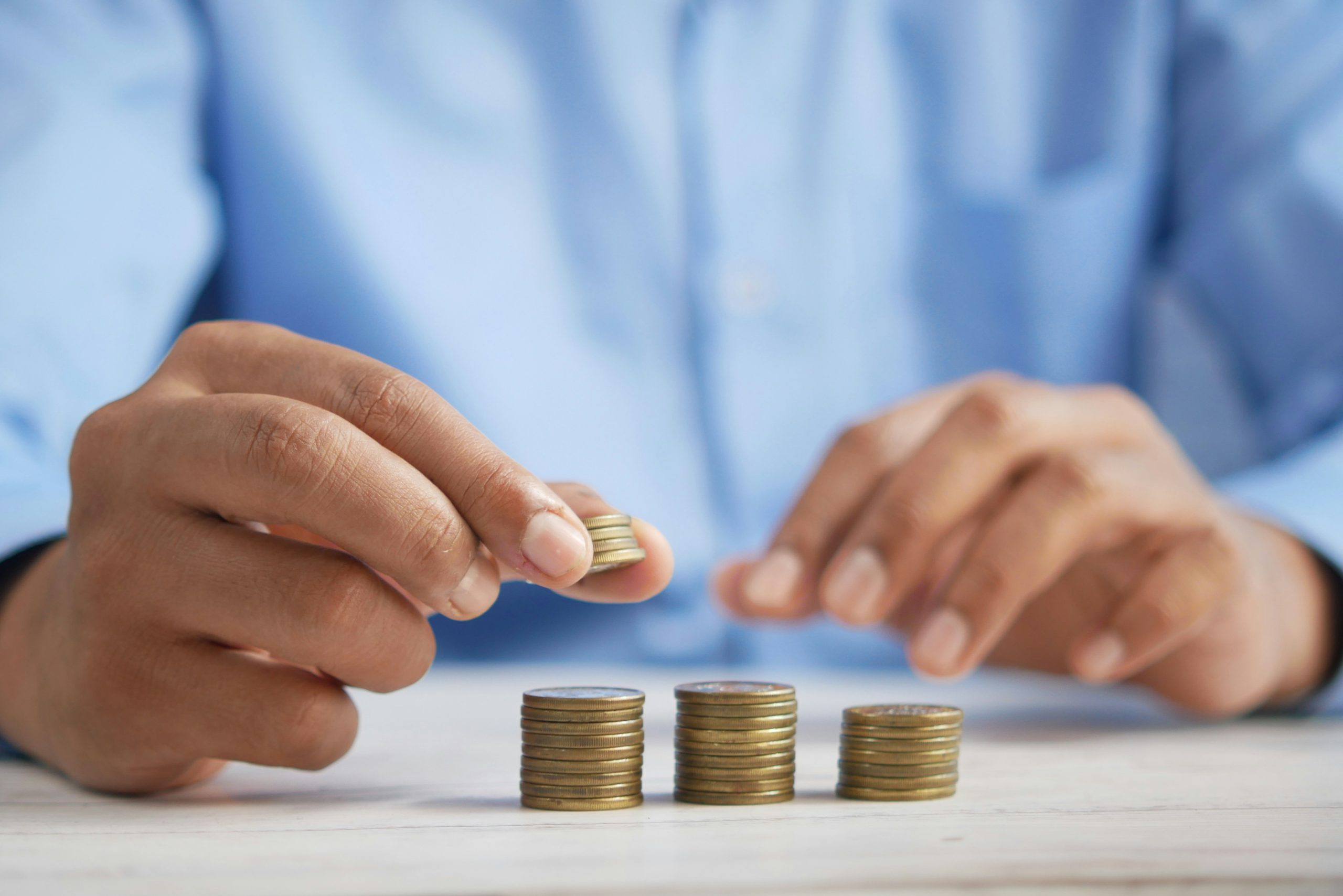
-
June 18, 2025
Navigating the Global Economic Growth
Risks and Roadmap for Recovery

Fatima Alvi

Navigating the Global Economic Growth
Risks and Roadmap for Recovery
Date: 18/06/2025
The Shaky Path of Global Growth
Just months ago, it seemed the world was emerging from a series of shocks—from the pandemic to natural disasters and geopolitical tensions. That optimism has faded. Now, global GDP growth is forecast at a mere 2.3% for this year—the slowest pace in nearly two decades outside of recession years. Without decisive policy action, this slowdown risks deepening economic inequality and derailing improvements in living standards.
Why Developing Economies Are Falling Behind
While advanced economies are expected to regain their pre-pandemic per capita output by 2027, many low- and middle-income countries will not. For these economies—especially those excluding China—per capita GDP may remain nearly 6% below where it should be. Feeling the squeeze from declining trade, underwhelming investment, and growing debt, these countries could lose two decades of economic gains unless corrective steps are taken.
Unpacking the Drivers Behind the Decline
1. Waning Momentum in Trade
Trade growth rates have progressively declined—dropping from 5.1% in the 2000s to around 2.6% this decade. This slowdown undermines the economic boost that global exchange of goods and services once provided.
2. Weakening Investment
Private and public sector investments have slowed dramatically, reducing the capital available for infrastructure, technology, and economic expansion.
3. Mounting Government Debt
Developing nations now carry deficits near 6% of GDP, with interest payments consuming a large slice of national budgets. In many places, foreign aid has also receded, escalating debt pressures and reducing fiscal flexibility.
Three Pathways to Recovery
A. Rebuild Global Trade Ties
Reducing tariffs and reviving deep trade agreements—encompassing regulatory alignment—could boost global growth by nearly 0.2 percentage points. Reinvigorating the World Trade Organization would foster a more predictable and efficient trading environment, especially beneficial for export-led developing economies.
B. Strengthen Fiscal Foundations
These countries must enhance revenue flows (around 25% of GDP on average) by broadening tax bases and improving collection. Redirecting subsidies to the most vulnerable, improving public financial management, and containing debt service are crucial to securing long-term fiscal resilience.
C. Drive Employment and Workforce Development
Demographic shifts—such as a doubling working-age population in Sub-Saharan Africa by 2050—demand rapid job growth. Investments in education and skills training can help emerging populations capitalize on urbanization and industrialization trends, promoting economic inclusion and stability.
Turning the Tide: Why Action Matters Now
Policymakers can’t afford to wait. Addressing trade barriers, budget mismanagement, and labor market weaknesses offers a chance to reignite economic momentum, reduce inequality, and restore decades of development progress. The current slowdown is not a distant threat—it’s a global crisis that requires global solutions.
Trade Growth – Job Creation – Economic Development – Emerging Markets – Sustainable Growth
-
- Digital Literacy: The Cornerstone of an Inclusive Digital Future
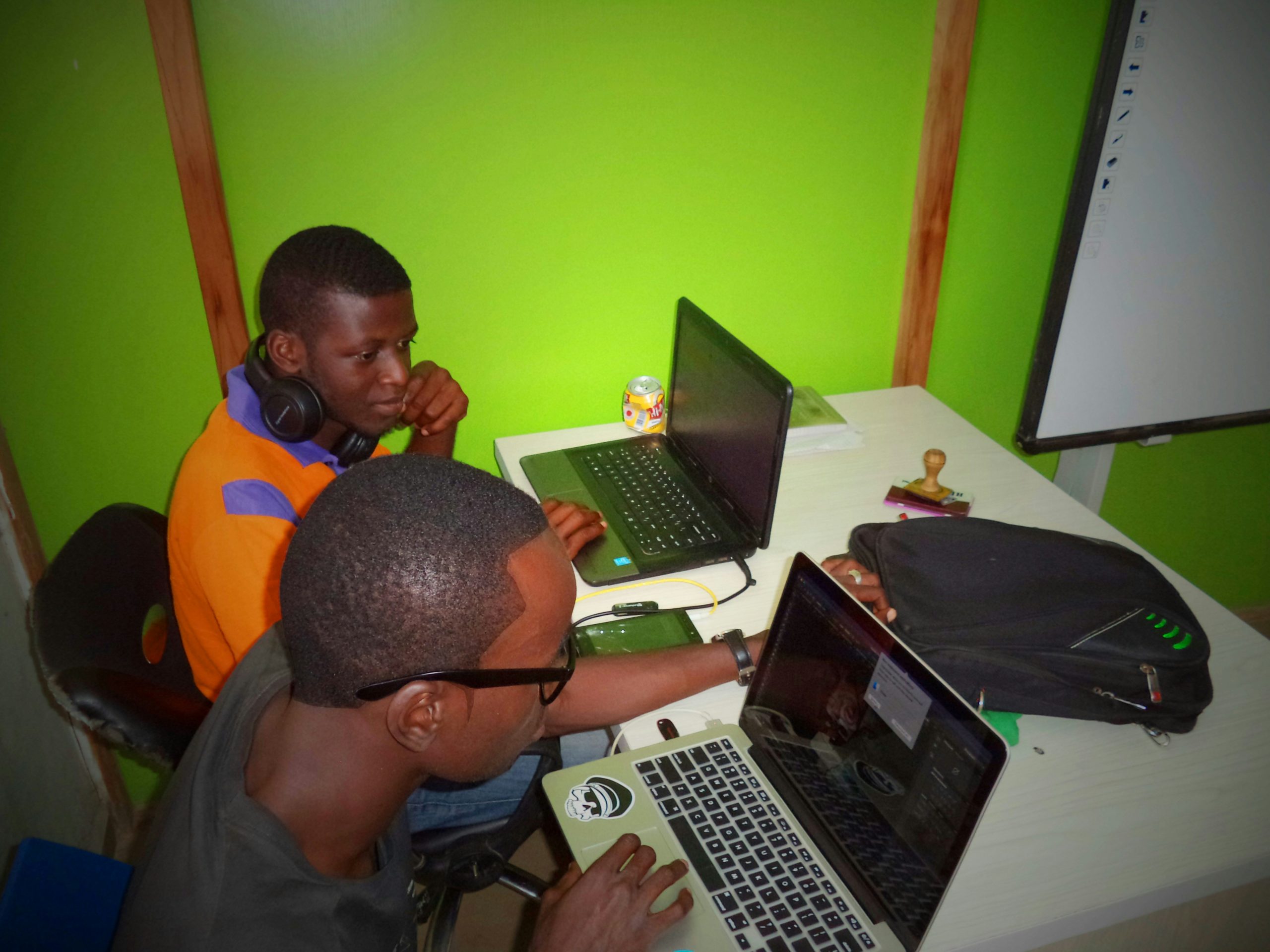
-
May 13, 2025
Digital Literacy: The Cornerstone of an Inclusive Digital Future
Empowering People with the Skills to Thrive in a Connected World

Fatima Alvi
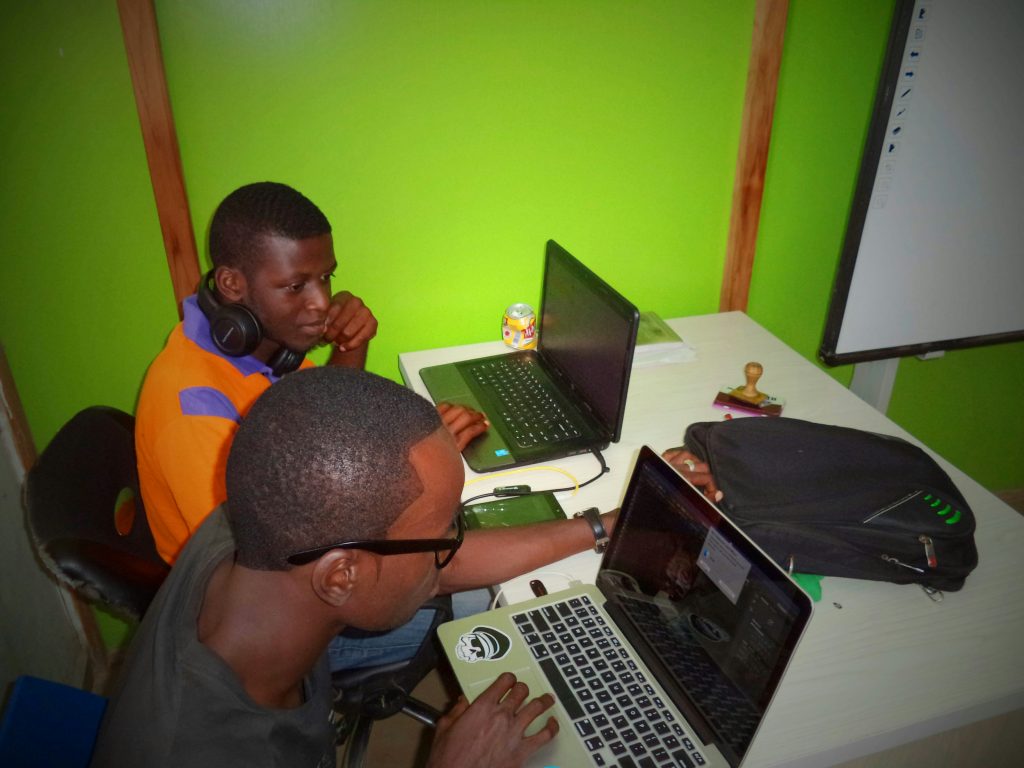
Digital Literacy: The Cornerstone of an Inclusive Digital Future
Empowering People with the Skills to Thrive in a Connected World
Date: 13/05/2025
In the age of rapid digital transformation, digital literacy is no longer a luxury—it’s a necessity. As more services, opportunities, and interactions shift online, the ability to navigate digital environments confidently and safely is fundamental to full participation in modern society.
From accessing education and employment to managing finances and engaging in civic life, digital literacy empowers individuals to thrive in the 21st century. Yet, millions across the globe remain digitally excluded due to limited skills, infrastructure, or access.
What Is Digital Literacy?
Digital literacy goes far beyond the ability to use a computer. It includes a broad set of skills:
- Navigating the internet
- Using digital tools and apps
- Evaluating online content critically
- Protecting personal data and privacy
- Communicating safely and ethically online
These competencies enable individuals to not only consume information but also create, collaborate, and participate meaningfully in digital spaces.
Why Digital Literacy Matters More Than Ever
The global shift toward digital systems in education, healthcare, government, and business has widened the digital divide. According to the International Telecommunication Union (ITU), around 2.6 billion people globally remain offline, many of whom are in low-income, rural, or marginalized communities.
Without digital literacy, people are at risk of falling further behind economically, socially, and politically. Digital skills open doors—to learning, employment, entrepreneurship, and empowerment.
The Gender Gap in Digital Skills
Women and girls are disproportionately affected by the digital divide. They are less likely to own digital devices, less likely to be online, and more likely to lack the confidence or training to use digital tools. The GSMA Mobile Gender Gap Report shows that women in low- and middle-income countries are 19% less likely than men to use mobile internet.
Closing this gap is essential for achieving gender equality and unlocking the economic potential of half the world’s population.
Education, Policy, and Partnerships: A Path Forward
To build a digitally literate society, we need an ecosystem approach—where governments, tech companies, educational institutions, and civil society work together.
Key strategies include:
- Integrating digital skills in school curricula from an early age
- Providing community-based training programs for adults and underserved groups
- Ensuring affordable access to digital devices and internet connectivity
- Developing inclusive content in local languages and formats
- Promoting digital safety awareness to combat misinformation and cybercrime
Digital Literacy for the Future of Work
In a world increasingly driven by AI, automation, and remote collaboration, digital literacy is foundational for employability. Basic skills are no longer enough—future-ready workers need to adapt to evolving tools, platforms, and ways of working.
Investing in digital upskilling and reskilling ensures that people aren’t just consuming technology, but using it to innovate, solve problems, and lead.
Conclusion: Leave No One Behind in the Digital Age
Digital literacy is the great equalizer of our time. When people have the skills to confidently use technology, they gain access to a world of opportunities. It’s how we bridge divides, boost economies, and create inclusive digital societies.
Now is the time for global action—because a digitally literate population isn’t just an advantage; it’s a requirement for a just, equitable, and sustainable future.
Digital Literacy – Global Digital Inclusion – Online Safety Awareness – ICT Skills – Tech Empowerment – Digital Divide
-
- Micro-Lending: Fueling Economic Resilience from the Ground Up

-
April 22, 2025
Micro-Lending: Fueling Economic Resilience from the Ground Up
How Small Loans Are Driving Big Change in Underserved Communities

Fatima Alvi

Micro-Lending: Fueling Economic Resilience from the Ground Up
How Small Loans Are Driving Big Change in Underserved Communities
Date: 22/04/2025
In a world where access to traditional banking remains limited for millions, micro-lending is emerging as a transformative force. By offering small, affordable loans to individuals who lack collateral or a formal credit history, micro-lending is not only helping people survive—but thrive.
From rural entrepreneurs in sub-Saharan Africa to urban artisans in Southeast Asia, micro-lending empowers individuals—particularly women and small business owners—to take control of their economic futures. These loans may be small in size, but their impact is anything but.
Why Micro-Lending Matters
Over 1.4 billion adults worldwide remain unbanked, according to the World Bank. Without access to credit, many are forced to rely on informal or exploitative lending systems. Micro-lending provides a safer, more empowering alternative.
Through microfinance institutions (MFIs), NGOs, fintech startups, and even peer-to-peer lending platforms, borrowers can access funds for everything from purchasing inventory and equipment to paying school fees or covering medical expenses. These loans unlock the potential for income generation and long-term financial independence.
Women at the Center of Microfinance
Globally, over 80% of micro-loan recipients are women. Why? Because research consistently shows that when women have access to financial resources, they invest in their families, communities, and businesses.
Programs like Grameen Bank in Bangladesh or BRAC’s microfinance initiatives have demonstrated that micro-lending to women not only boosts household income but also improves health outcomes, education levels, and community development.
In many cases, women form lending groups or cooperatives to share risk and build social capital—further strengthening economic resilience.
Digital Micro-Lending: A Fintech Revolution
With the rise of smartphones and mobile wallets, micro-lending has entered a new era. Digital micro-lending platforms powered by AI and alternative credit scoring are reaching remote populations faster and cheaper than ever before.
Companies like Kistpay are using mobile technology to offer instant, low-barrier loans—often with no paperwork, collateral, or bank visits required. These platforms assess creditworthiness using non-traditional data such as mobile phone usage, social behavior, and transaction history.
Such innovation reduces lending risk and brings millions into the formal financial ecosystem, particularly in Africa, South Asia, and Latin America.
Challenges and the Path Forward
While micro-lending has made tremendous strides, challenges remain. Critics argue that high interest rates, short repayment periods, and over-indebtedness can trap borrowers in cycles of debt. That’s why responsible lending practices, financial education, and borrower protections must go hand in hand with loan distribution.
There’s also a growing need for regulation and transparency, especially as the sector scales through digital platforms. Ensuring ethical lending models will be key to micro-lending’s sustainable impact.
Conclusion: A Micro Solution to a Macro Problem
In a time of widening inequality and economic volatility, micro-lending offers a pathway to financial inclusion, dignity, and resilience. It bridges the gap between survival and opportunity—empowering millions of people who have long been left behind by traditional finance.
The future of micro-lending lies in smart technology, ethical practices, and human-centered design. When done right, it doesn’t just lend money—it builds lives, fuels dreams, and strengthens economies from the ground up.
Micro-Lending – Global Microfinance – Digital Micro-Loans – Financial Inclusion – Fintech Lending Platforms – Mobile Loans
-
- Unlocking Economic Growth: The Power of Women’s Participation
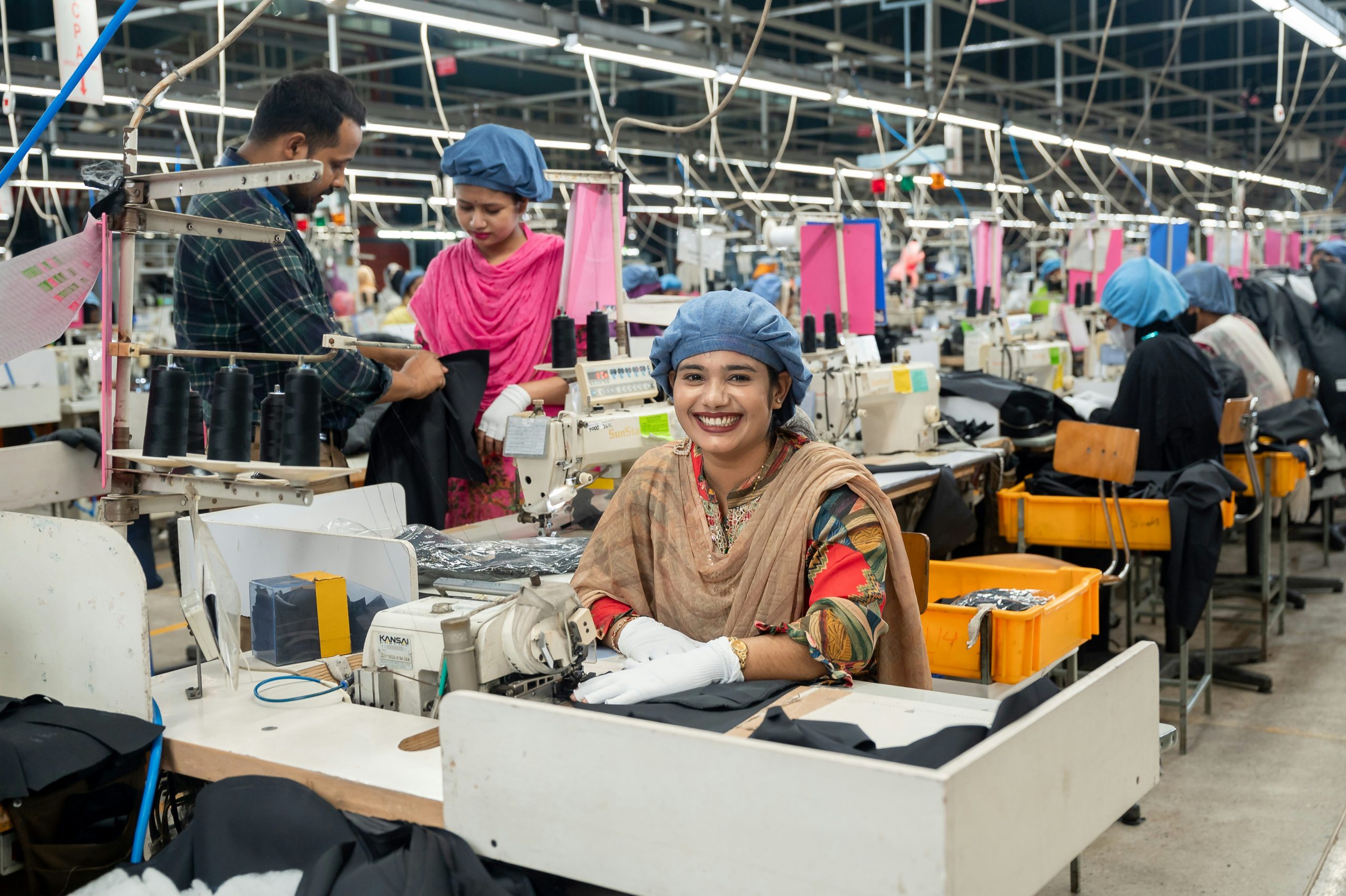
-
March 18, 2025
Unlocking Economic Growth: The Power of Women’s Participation
Why Women Are the Future of Inclusive Economic Development

Fatima Alvi
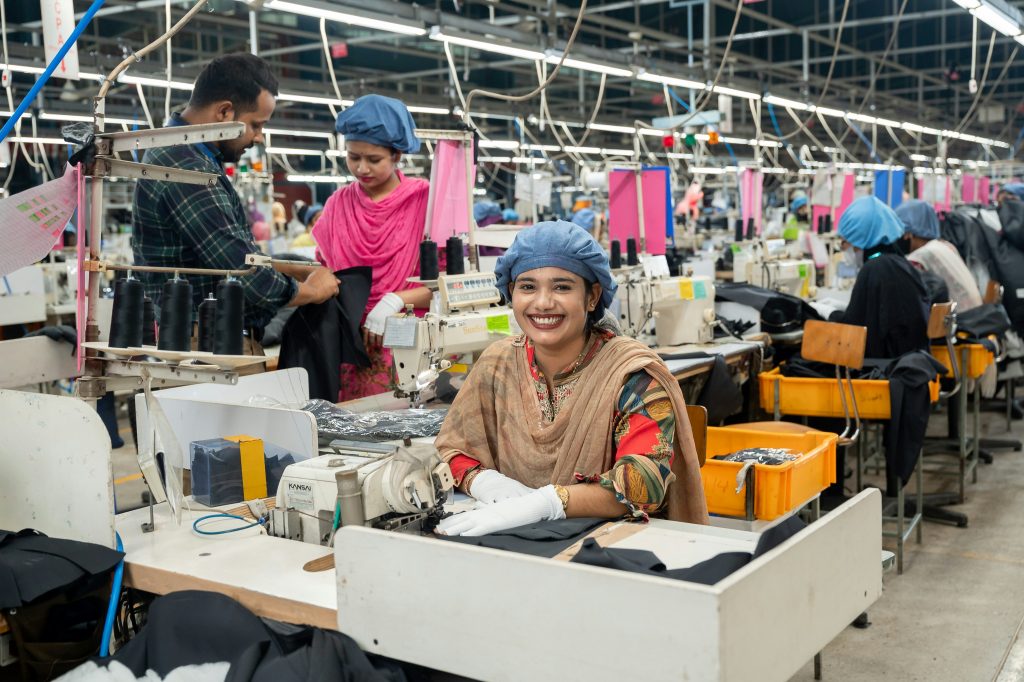
Unlocking Economic Growth: The Power of Women’s Participation
Why Women Are the Future of Inclusive Economic Development
Date: 18/03/2025
In a rapidly evolving global economy, one truth is becoming clearer than ever: no nation can reach its full economic potential without the active participation of women. Across industries and regions, the data shows that empowering women to engage meaningfully in the economy isn’t just about fairness—it’s a smart economic strategy with far-reaching impact.
Women make up half of the world’s population, but they continue to be underrepresented in the workforce, underpaid in comparison to men, and often left out of financial and entrepreneurial ecosystems. Bridging this gender gap isn’t merely a social imperative; it represents a multi-trillion-dollar opportunity for global economic growth.
The Economic Cost of Gender Inequality
According to the World Bank, limiting women’s access to jobs, education, and capital has cost the global economy over $160 trillion in lost income and productivity. In many developing countries, cultural, legal, and institutional barriers prevent women from entering the workforce or starting businesses.
Even in more advanced economies, women often face a “glass ceiling” that restricts their career progression. Gender wage gaps persist, and caregiving responsibilities disproportionately fall on women—pushing many out of full-time employment.
By removing these barriers and ensuring equal access to economic resources, global GDP could increase significantly. McKinsey estimates that advancing gender equality could add $12 trillion to the global economy by 2025.
Why Investing in Women Pays Off
When women work, economies grow. Research shows that women reinvest up to 90% of their income back into their families and communities, compared to 30–40% by men. This creates a ripple effect—better education, health, and economic outcomes for future generations.
Furthermore, companies with higher gender diversity in leadership outperform their peers in profitability, innovation, and productivity. Empowering women as leaders, entrepreneurs, and innovators creates stronger, more resilient economies.
Closing the Digital and Financial Gender Divide
One of the biggest barriers to women’s economic participation is lack of access to digital tools and financial services. In low- and middle-income countries, women are 7% less likely to own a smartphone and 20% less likely to access the internet than men. The financial divide is even more stark: nearly 1 billion women globally are unbanked.
Digital and financial inclusion programs are now critical. Fintech companies like Kistpay, NGOs, and multilateral organizations are working to equip women with smartphones, digital literacy training, and access to mobile banking. When women can access finance and markets digitally, they are more likely to start and grow businesses—further accelerating development.
What Needs to Change: Policies and Mindsets
Real change requires a mix of supportive public policies, private-sector initiatives, and cultural shifts. Governments must create laws that guarantee equal pay, parental leave, property rights, and protection from discrimination. Private companies need to foster inclusive hiring, promote women into leadership, and invest in upskilling programs.
Just as importantly, society must rethink outdated gender roles and challenge norms that hold women back. Gender equity isn’t just a women’s issue—it’s a global economic priority.
Conclusion: Women Are Not Just Beneficiaries—They Are Economic Drivers
The path to a stronger, more inclusive global economy runs through the empowerment of women. When we invest in women—through education, technology, finance, and leadership opportunities—we invest in everyone’s future.
Unlocking women’s potential is not charity. It is sound economic policy, strategic investment, and the key to lasting prosperity.
Gender Equality Economy – Economic Empowerment – Financial Inclusion – Women Entrepreneurs – Gender Wage Gap – Inclusive Economic Growth
-
- Mastering Financial Management in a Fast-Changing World
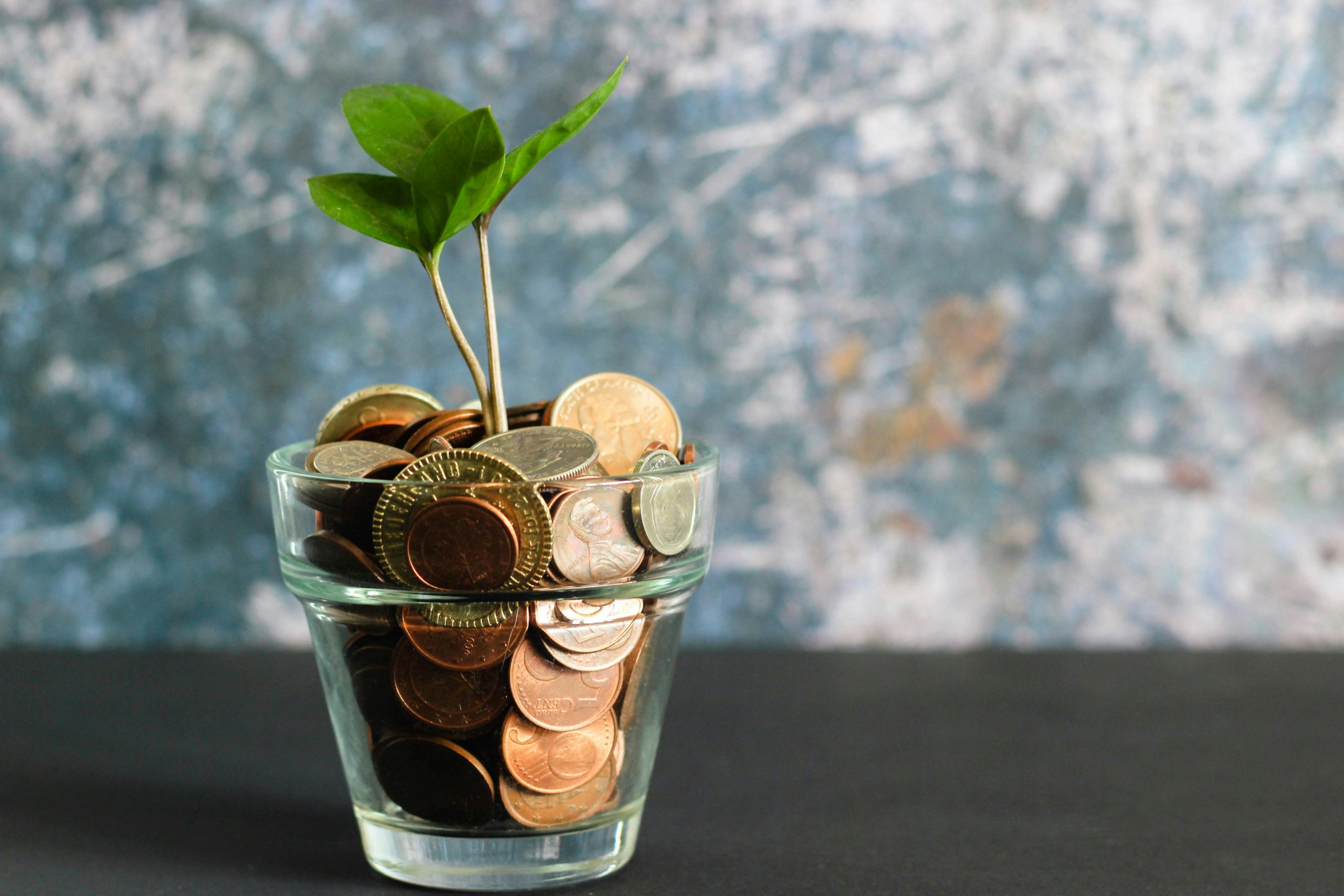
-
February 27, 2025
Mastering Financial Management in a Fast-Changing World
How Smart Money Moves Today Can Secure Your Tomorrow

Fatima Alvi

Mastering Financial Management in a Fast-Changing World
How Smart Money Moves Today Can Secure Your Tomorrow
Date: 27/02/2025
In an increasingly volatile global economy, mastering financial management is no longer optional—it’s essential. Whether you’re an entrepreneur, a salaried employee, or a student just starting out, the ability to understand, plan, and manage your finances determines not just your economic stability but your ability to grow and thrive long-term.
From inflation and rising interest rates to unexpected global disruptions, financial unpredictability is the new normal. That’s why individuals and businesses alike are prioritizing strategic financial planning, risk management, and smarter investments like never before.
Why Financial Literacy Is More Crucial Than Ever
Financial literacy isn’t just about budgeting—it’s about making informed decisions across a range of areas: spending, saving, investing, borrowing, and planning for retirement. Yet according to global surveys, more than half the world’s adult population lacks basic financial knowledge, which leads to poor financial choices and long-term stress.
Improving financial literacy has become a worldwide goal, with governments, banks, fintech platforms, and even schools working to equip people with tools for smarter money management. Digital platforms like Mint, YNAB, and Kistpay are helping democratize access to personal finance tools that once required professional advisors.
Tech-Driven Financial Management: A Game Changer
Fintech has revolutionized the financial landscape. From automated expense tracking to AI-driven investment platforms, managing money has never been more convenient. Users can now monitor real-time cash flows, set personalized savings goals, access microloans, and even invest in global markets—all from their smartphones.
With AI algorithms analyzing user behavior, financial apps can now offer customized insights that help users build stronger habits. For example, if you’re overspending in certain categories or not saving enough for emergencies, platforms now send real-time nudges to keep your financial health on track.
The Importance of Emergency Funds and Diversification
The last few years have shown how quickly jobs can be lost, economies can stall, and markets can swing. Having a financial cushion—ideally covering 3 to 6 months of living expenses—is now seen as a cornerstone of financial resilience.
In addition, diversification remains one of the smartest strategies for financial protection. By spreading your investments across sectors, regions, and asset classes—like stocks, bonds, real estate, and even cryptocurrencies—you minimize risk and increase the potential for long-term gains.
Future-Proofing Your Finances with Long-Term Thinking
Short-term wins can be exciting, but sustainable financial wellness is built on long-term planning. This includes retirement savings, health insurance, debt reduction, and understanding your risk profile. Even small monthly contributions to retirement accounts or mutual funds can compound into significant assets over time, thanks to the power of interest and consistency.
In today’s climate, proactive financial planning is one of the greatest gifts you can give yourself—and your future.
Conclusion: Financial Freedom Starts with Financial Awareness
The tools are there. The knowledge is increasingly accessible. What’s needed now is the will to take charge. Whether you’re aiming for personal stability, entrepreneurial growth, or generational wealth, effective financial management is the key to unlocking your goals.
The best time to start was yesterday. The next best time is today.
Financial Management – Smart Money – Financial Literacy – Saving Money Strategies – Emergency Fund Planning
-
- Digital Wellbeing in the Age of Hyperconnectivity

-
January 19, 2025
Digital Wellbeing in the Age of Hyperconnectivity
How to Stay Human in a World That’s Always Online

Fatima Alvi

Digital Wellbeing in the Age of Hyperconnectivity
How to Stay Human in a World That’s Always Online
Date: 19/01/2025
In our hyperconnected, always-on world, digital technology has become both a lifeline and a double-edged sword. From virtual meetings and AI-powered productivity tools to 24/7 social feeds and app notifications, our lives are saturated with screens. While this connectivity powers unprecedented innovation and convenience, it also raises a serious question: What is all this doing to our wellbeing?
As digital tools infiltrate nearly every aspect of life—work, relationships, education, and even sleep—there’s a growing global movement focused on digital wellbeing: the mindful, balanced use of technology that enhances rather than erodes our quality of life.
The Burnout Generation: A Global Crisis
Remote work blurred the line between office and home. Smartphones made it impossible to “log off.” And with the rise of algorithm-driven content, we’re constantly pulled into digital rabbit holes that eat away at time and attention. The result? A global spike in digital fatigue, anxiety, sleep disorders, and mental health issues—especially among Gen Z and Millennials.
The World Health Organization has identified digital overexposure as a rising public health concern. The cost isn’t just mental—chronic burnout is now linked to physical issues like cardiovascular disease, vision problems, and reduced immunity.
Reclaiming Control: What Digital Wellbeing Actually Means
Digital wellbeing doesn’t mean ditching technology—it means using it consciously. It’s about setting boundaries, designing healthier online habits, and creating tech ecosystems that support, rather than undermine, human needs.
From turning off push notifications and using screen-time trackers to building in tech-free hours and prioritizing in-person relationships, people are rediscovering balance. Some companies are also introducing “right to disconnect” policies and wellness-focused UX design to address the problem at the root.
The Role of Big Tech in Protecting Digital Health
Tech giants like Apple, Google, and Meta are under increasing pressure to prioritize user wellbeing. Features like Focus Mode, Screen Time reports, and sleep tracking are steps in the right direction—but more needs to be done.
Designing apps that respect attention, reduce addictive features, and encourage breaks is not only ethical—it’s a competitive advantage in a market that’s waking up to digital burnout. Ethical design and humane tech are quickly becoming key differentiators in the digital product landscape.
A Global Movement for Digital Mindfulness
From Europe to Southeast Asia, digital wellbeing is emerging as a policy and education priority. Schools are teaching children about healthy screen habits. Companies are hiring Chief Wellbeing Officers. Governments are drafting digital wellness guidelines. It’s a shift from tech obsession to tech intention.
Global leaders are realizing that the future of technology is not just about speed and scale—it’s about balance and humanity.
Conclusion: From Hyperconnectivity to Hyperawareness
Technology isn’t going anywhere—but how we engage with it must evolve. Digital wellbeing is no longer a luxury or a personal trend. It’s a global necessity.
To thrive in the digital age, we must create space for silence, intention, and true connection. It’s not about escaping the digital world—but learning to live in it without losing ourselves.
Digital Wellbeing – Mental Health – Digital Burnout – Hyperconnectivity – Digital Detox – Healthy Digital Habits
-
- The Rise of Sustainable AI: Building Smarter, Greener, and More Ethical Technology

-
December 15, 2024
The Rise of Sustainable AI: Building Smarter, Greener, and More Ethical Technology
Why the Future of Artificial Intelligence Must Also Be Sustainable

Fatima Alvi

The Rise of Sustainable AI: Building Smarter, Greener, and More Ethical Technology
Why the Future of Artificial Intelligence Must Also Be Sustainable
Date: 15/12/2024
Artificial intelligence is no longer just a futuristic concept—it’s embedded in our homes, healthcare systems, finance platforms, education tools, and governance structures. From generative models to real-time decision-making systems, AI is revolutionizing how we work, think, and solve global problems. But with its explosive growth comes an urgent question: Can AI be sustainable?
As the environmental and ethical costs of AI come into sharper focus, the world faces a critical turning point. The conversation is no longer about what AI can do, but what it should do—and how we can innovate responsibly without compromising the planet or human values.
The Environmental Impact of AI: A Growing Concern
Training large-scale AI models consumes enormous amounts of energy and water. A single advanced model like GPT or Gemini can require as much electricity as powering hundreds of homes annually—and that’s just for training. Ongoing usage and deployment multiply the carbon footprint, especially when hosted on massive server farms that rely on non-renewable energy sources.
As climate change accelerates, these hidden costs of artificial intelligence must be addressed. If left unchecked, AI could become one of the most resource-intensive digital technologies of our time.
What is Sustainable AI?
Sustainable AI refers to the development and deployment of artificial intelligence systems that are environmentally conscious, ethically designed, and socially inclusive. It’s not only about reducing carbon emissions but also about ensuring AI respects human rights, avoids algorithmic bias, and promotes fairness and transparency.
True sustainability in AI means aligning technological progress with planetary boundaries and social values—balancing innovation with long-term responsibility.
Greening the Machine: Steps Toward Eco-Friendly AI
Major tech companies are beginning to embrace sustainable practices. From carbon-neutral data centers to low-power model architectures, the industry is exploring ways to reduce AI’s energy footprint. Developers are optimizing training methods, reusing models instead of retraining from scratch, and investing in hardware efficiency.
AI can also enable sustainability by improving climate forecasting, optimizing energy use in smart cities, reducing food waste through precision agriculture, and advancing clean tech R&D. When built and used consciously, AI becomes part of the solution—not just another problem.
Ethical AI is Sustainable AI
Beyond energy use, AI sustainability also includes ethical and societal impacts. Biased algorithms, lack of transparency, and surveillance misuse threaten to erode public trust. Creating ethical frameworks, inclusive datasets, and governance structures ensures AI supports human dignity, not undermines it.
Sustainable AI is not just green—it’s just.
Global Collaboration for a Sustainable AI Future
Tackling these challenges requires more than just technical fixes. It calls for collaboration across nations, industries, academia, and civil society. Policymakers must regulate responsibly, researchers must innovate with purpose, and users must stay informed and vigilant.
Open dialogue, transparent metrics, and shared global standards will be key to making AI work for everyone—today and tomorrow.
Conclusion: Building AI That Builds a Better World
Artificial intelligence holds the potential to solve humanity’s most pressing challenges—but only if we design and deploy it with care. A sustainable AI future is within reach, but it demands conscious effort from every player in the ecosystem. If we succeed, we won’t just build smarter systems—we’ll build a smarter planet.
Sustainable AI – Green Technology – Ethical AI – Carbon Footprint – Responsible Innovation – AI For Good.
-
- Empowering Women to Thrive in the Tech-Driven Era
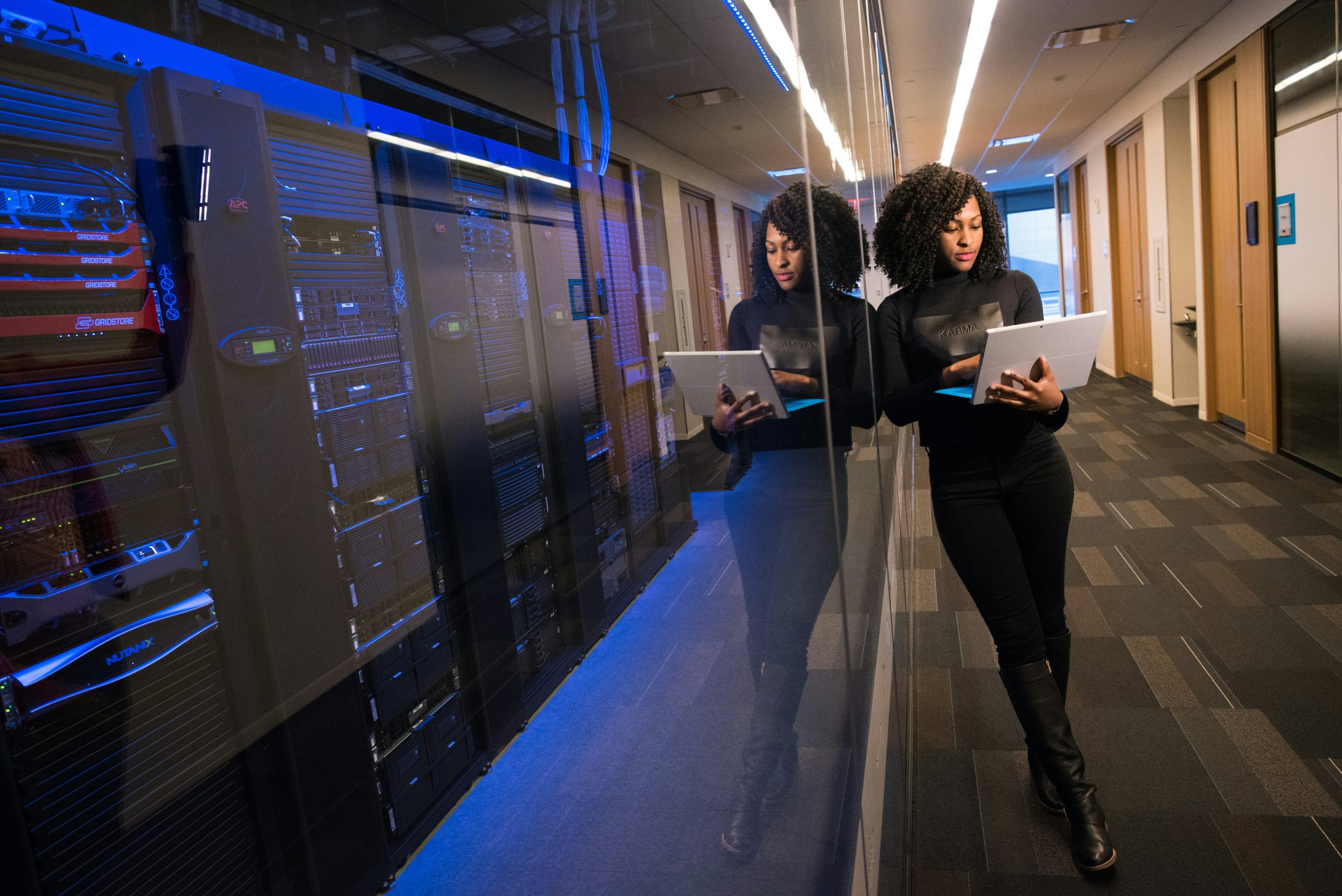
-
November 28, 2024
Empowering Women to Thrive in the Tech-Driven Era
Creating Safe, Inclusive Online Spaces for the Next Generation of Women Leaders

Fatima Alvi
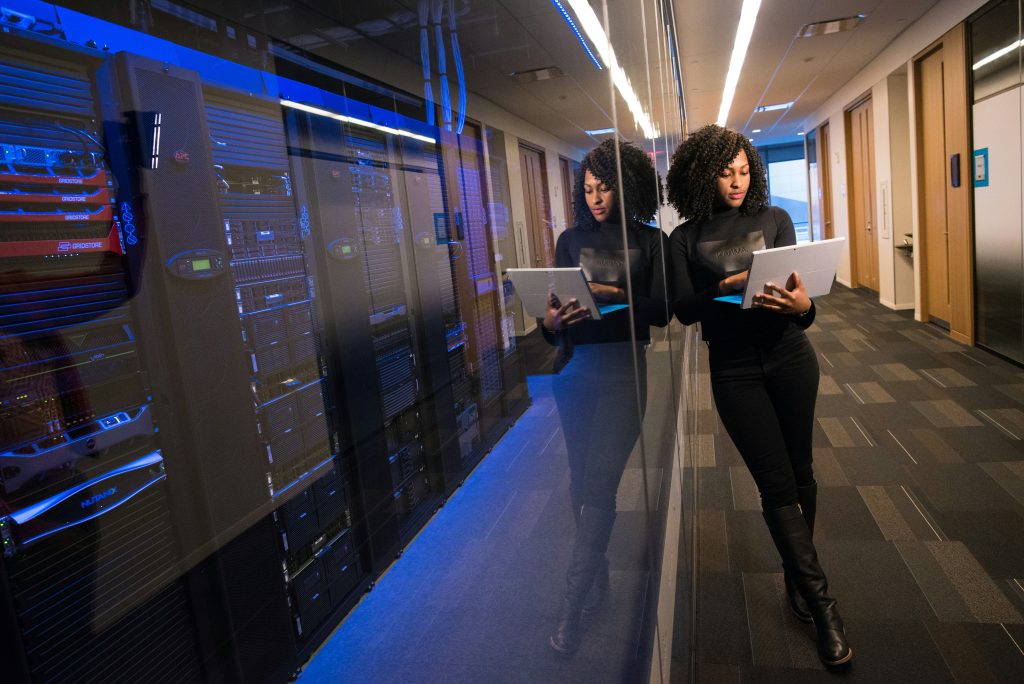
Empowering Women to Thrive in the Tech-Driven Era
Creating Safe, Inclusive Online Spaces for the Next Generation of Women Leaders
Date: 28/11/2024
As digital transformation accelerates across the globe, technology continues to shape the future of how we live, work, and connect. But while innovation offers remarkable opportunities, it also presents complex challenges—especially when it comes to ensuring that women and girls can navigate the digital world with confidence, security, and trust.
Digital empowerment cannot succeed without digital safety. Women must feel secure online to fully participate in today’s digital economy. And to achieve this, we must put digital trust at the heart of technology—protecting data, strengthening privacy, and dismantling cyber threats that disproportionately affect women and marginalized communities.
Why Digital Trust Matters for Women and Girls
The internet has become a fundamental space for education, entrepreneurship, and self-expression. But for many women, these benefits come with risks: cyber harassment, privacy violations, data exploitation, and misinformation. According to global reports, women are more likely to face online abuse and less likely to report it—fearing social repercussions or mistrusting response systems.
This imbalance leads to digital exclusion, limiting not only personal freedom but also access to economic opportunity. If we want to unlock the full potential of digital inclusion, building online trust isn’t optional—it’s urgent.
Leveraging Technology for Safer Digital Engagement
Organizations worldwide are now integrating advanced technologies to promote safer online environments. Artificial intelligence and machine learning are helping detect and prevent online threats in real-time. Secure identity solutions are reducing digital fraud. Data encryption and privacy-first architectures are safeguarding sensitive information.
From conversational AI that flags abusive behavior, to secure digital wallets that protect women’s financial data, technology is being reimagined to serve—not silence—its most vulnerable users. Cloud communication tools, encrypted platforms, and user-friendly interfaces are enabling women to interact online without fear, unlocking a new level of digital freedom.
Digital Literacy: The Foundation of Confidence and Safety
While building safe platforms is critical, the real game-changer lies in education. Empowering women with digital literacy—the knowledge to understand cybersecurity, manage digital identities, and protect personal data—fuels resilience and autonomy. It shifts the narrative from victimhood to leadership.
Whether through grassroots training sessions or global e-learning platforms, equipping women and girls with the right digital skills fosters a culture of awareness and ownership. And as more women become tech creators, developers, founders, and policymakers, they reshape the future of tech itself.
The Path Forward: Inclusive Innovation and Collective Responsibility
Creating an internet that works for everyone is not the responsibility of any one organization—it’s a collective mission. Governments, companies, developers, and communities must work together to advocate for gender-responsive policies, inclusive design standards, and robust online protections.
Tech inclusion isn’t just about access—it’s about agency. A future where women feel safe, heard, and empowered online is a future where innovation thrives and societies prosper.
As we reimagine our digital future, let us commit to building systems that are as secure as they are inclusive—where women everywhere can thrive without compromise.
Digital Trust – Online Safety – Digital Inclusion – Women In STEM – Digital Literacy – Online Harassment
-
- Digital Detox: Why Unplugging is the New Productivity Hack

-
October 18, 2024
Digital Detox: Why Unplugging is the New Productivity Hack
Reclaiming Focus in a Hyperconnected World

Fatima Alvi

Digital Detox: Why Unplugging is the New Productivity Hack
Reclaiming Focus in a Hyperconnected World
Date: 18/10/2024
In today’s always-on world, we are constantly bombarded by pings, notifications, emails, and infinite scrolling. While technology has brought incredible convenience, it’s also made it harder to focus, think deeply, and be present. That’s where the concept of a digital detox comes in—a conscious effort to disconnect from screens and reconnect with real life.
Globally, people are starting to realize that stepping back from devices isn’t about rejecting technology—it’s about using it more intentionally. Taking breaks from digital stimulation helps reduce stress, improve sleep, and increase overall mental clarity.
The Science Behind the Screen Break
Research shows that excessive screen time, especially on social media, can lead to anxiety, attention disorders, and reduced productivity. Dopamine-driven platforms are designed to keep us hooked. But when we unplug, even briefly, the brain begins to recalibrate. Concentration improves, creativity resurfaces, and we regain control over our time.
In workplaces, digital detoxing is gaining traction as leaders recognize the need to protect mental wellness and prevent burnout. Some companies now encourage “tech-free” hours or offline weekends to foster deeper thinking and human connection.
Simple Ways to Start a Digital Detox
You don’t need to go off the grid to experience the benefits. Start with small, consistent actions: turn off non-essential notifications, create screen-free zones (like your bedroom or dining area), schedule daily offline time, or even try a 24-hour digital Sabbath once a week.
Digital wellness apps, ironically, can help too—by tracking screen time and setting limits. The goal isn’t to eliminate technology but to build a healthier relationship with it.
Detox to Reconnect with What Matters
Digital detoxing is not about going backward—it’s about finding balance in a hyperconnected era. Whether you’re a student, professional, or parent, reclaiming your focus can unlock higher productivity, better relationships, and deeper fulfillment.
In a world that rewards speed and noise, choosing to pause is a radical—and powerful—act of self-care.
Digital Detox – Digital Wellness – Tech Burnout – Productivity Hacks – Work-Life Balance
-
- The Rise of Artificial Intelligence: Shaping the Future of Work and Innovation

-
September 22, 2024
The Rise of Artificial Intelligence: Shaping the Future of Work and Innovation
AI Is No Longer the Future—It’s the Present

Fatima Alvi

The Rise of Artificial Intelligence: Shaping the Future of Work and Innovation
AI Is No Longer the Future—It’s the Present
Date: 22/09/2024
Artificial Intelligence (AI) is transforming the way the world works, learns, communicates, and does business. From predictive algorithms and chatbots to autonomous vehicles and generative content tools, AI is driving a new era of efficiency and innovation. Whether it’s a student using AI to study smarter or a company using machine learning to optimize supply chains, AI is touching every sector of modern life.
In Pakistan, AI adoption is gaining momentum. Startups, universities, and government bodies are exploring how AI can improve education, health, agriculture, fintech, and public service delivery. The recent surge in generative AI tools like ChatGPT and Midjourney has also sparked growing interest among youth and professionals eager to automate workflows and boost productivity.
AI’s Impact on Jobs and the Economy
One of the biggest questions people ask is: Will AI replace human jobs? The answer is more nuanced. While AI will automate many repetitive and manual tasks, it is also creating new job categories that require creativity, problem-solving, and data literacy. Fields like AI ethics, prompt engineering, data annotation, and model training are opening up opportunities that didn’t exist a few years ago.
For Pakistan to compete globally, it must invest in AI talent. That means reforming education, promoting STEM, and building industry-academia linkages that help the next generation prepare for an AI-powered world.
Challenges of Bias, Access, and Responsibility
AI brings powerful benefits—but also serious concerns. Bias in algorithms, privacy issues, and misinformation generated by AI tools are real challenges. Moreover, developing countries often lag behind due to limited data access, infrastructure, or policy frameworks.
To fully harness AI’s potential, Pakistan must invest in inclusive AI policies that promote transparency, digital access, and localized data. It must also support AI startups and create ethical guardrails to ensure responsible use.
AI Can Supercharge National Progress
AI isn’t just about technology—it’s about national competitiveness. Countries that embrace AI early will lead in innovation, productivity, and global influence. For Pakistan, AI offers a chance to leapfrog outdated systems and build smarter cities, resilient healthcare, modern agriculture, and digital governance.
By prioritizing research, skills development, and strategic investments, Pakistan can become not just an AI consumer—but a global contributor to the AI revolution.
Artificial Intelligence – AI Jobs Future – Machine Learning – Digital Transformation – STEM
-
- AgriTech in Pakistan: Revolutionizing Farming Through Technology

-
August 10, 2024
AgriTech in Pakistan: Revolutionizing Farming Through Technology
Technology Is Cultivating a New Era of Farming

Fatima Alvi

AgriTech in Pakistan: Revolutionizing Farming Through Technology
Technology Is Cultivating a New Era of Farming
Date: 10/08/2024
Agriculture is the backbone of Pakistan’s economy, employing over a third of the population. But the sector faces mounting challenges—climate change, water scarcity, outdated practices, and limited market access. Farmers, especially smallholders, struggle with poor yields, rising costs, and a lack of reliable data.
AgriTech is stepping in to change that. By combining traditional knowledge with tools like mobile apps, drones, AI, and satellite imaging, farmers can now access real-time information on weather, soil health, crop advisory, and prices. These insights are improving decision-making, boosting productivity, and increasing incomes—especially in underserved rural areas.
Digital Solutions to Deep Agricultural Problems
Companies like Farmdar, Tazah, and BaKhabar Kissan are transforming how farmers grow and sell. Farmdar uses drones and satellite data for early crop health detection, while Tazah connects farmers directly to markets, cutting out middlemen. Even simple SMS and voice-based alerts in local languages are making a massive difference for rural communities.
At the same time, climate-smart technologies like smart irrigation and AI-driven pest prediction are helping farmers conserve water and protect crops. These innovations are not only boosting yields—they’re making agriculture more resilient in the face of growing environmental threats.
Financial Access and Inclusion Through Agri-Fintech
AgriTech platforms are also solving the rural credit gap. Without formal credit histories, many farmers couldn’t access loans—until now. Fintech solutions are using mobile and farm performance data to offer microloans and “Buy Now, Pay Later” options for seeds and fertilizers. Mobile wallets and digital payments are ensuring secure, timely transactions, empowering farmers to invest in their futures.
But digital inclusion must go further. Women, who form a huge part of the agricultural workforce, often lack access to phones and financial services. Inclusive AgriTech platforms must design for female farmers too, ensuring broader impact across communities.
A Digital Future for Food Security
The potential of AgriTech in Pakistan is massive—but it requires support. Public-private partnerships, better internet infrastructure, and training programs are key to scaling solutions. As Pakistan’s population grows and climate pressures mount, modernizing agriculture isn’t just an option—it’s a necessity.
AgriTech is laying the foundation for a smarter, more profitable, and sustainable food system. By acting now, Pakistan can build a resilient agricultural economy that feeds its people—and drives national growth.
Agritech – Smart Farming – Agriculture Technology – Climate-Smart – Agriculture Innovation – Food Security
-
- How Smartphone Financing Is Powering Financial Inclusion in Emerging Markets

-
July 24, 2024
How Smartphone Financing Is Powering Financial Inclusion in Emerging Markets
From the unbanked to the digitally empowered

Fatima Alvi

How Smartphone Financing Is Powering Financial Inclusion in Emerging Markets
From the unbanked to the digitally empowered
Date: 24/07/2024
The Digital Divide and the Smartphone Opportunity
In many parts of the world — especially across South Asia, Africa, and Latin America — access to smartphones remains a key barrier to digital participation. While internet penetration continues to grow, millions still rely on outdated feature phones, limiting their access to online education, digital jobs, healthcare, and financial services.
In Pakistan alone, more than 59 million users still depend on 2G feature phones, despite over 132 million broadband subscribers nationwide. The inability to afford a smartphone upfront remains a major hurdle — and that’s where smartphone financing models step in.
What Is Smartphone Financing — And Why Does It Matter?
Smartphone financing allows users to purchase devices through installment-based payments, making them more affordable and accessible to the underserved and unbanked. Using technology like device locking controls (DLC) and AI-powered risk scoring, companies can offer low-risk, flexible payment plans without needing traditional credit scores or collateral.
This model is especially effective in emerging markets where formal credit access is limited. It enables people to leapfrog into the digital economy — participating in e-commerce, online education, telemedicine, and mobile banking.
Driving Financial Inclusion with Alternative Credit Scoring
One of the most transformative aspects of this model is alternative credit profiling. Instead of relying on outdated or nonexistent credit histories, fintech companies assess a user’s ability to repay based on behavior data, mobile usage, digital activity, and repayment of small loans or utility bills.
This system is crucial in countries like Pakistan, where over 100 million adults remain unbanked, often due to lack of documentation or formal financial footprints. Smartphone financing not only helps them own a digital device, but also starts building their credit history — opening doors to future financial services like insurance, savings, and business loans.
Empowering Women Through Digital Access
Women are among the most digitally excluded populations in emerging markets. Gender gaps in mobile ownership, internet use, and financial access are often driven by social, cultural, and economic factors. Kistpay programs that offer female-friendly smartphone financing, combined with digital literacy and financial training, can radically shift this dynamic.
Initiatives like women-led helplines, financial literacy workshops, and safe retail access points are proving critical. When women are connected, they are more likely to engage in online entrepreneurship, access telehealth services, and support their families’ education.
The Economic Ripple Effect of Connectivity
The impact of affordable smartphone ownership goes beyond the individual. Studies show that increased mobile and internet access correlates strongly with GDP growth, job creation, and entrepreneurial activity. A connected population means more digital transactions, more gig economy participation, and better service delivery in areas like agriculture, education, and public health.
For example, farmers can receive real-time weather alerts and market prices via apps. Gig workers can access job platforms like FoodPanda, Bykea, or Careem. Students in remote areas can use YouTube and EdTech platforms for learning.
A New Era of Embedded Finance
The future of smartphone financing is closely tied with embedded finance — the integration of financial tools into non-financial apps and services. With just a smartphone, users can now:
- Apply for micro-loans
- Pay utility bills
- Order groceries
- Buy insurance
- Save small amounts via digital wallets
As telcos, banks, fintechs, and OEMs collaborate more closely, we are entering a phase where every smartphone becomes a financial hub — especially for those previously excluded from the system.
Challenges and the Road Ahead
Despite the promise, some barriers remain. These include:
- Digital literacy gaps, especially in rural areas
- Cybersecurity concerns
- Regulatory complexity across different jurisdictions
- Sustainable financing models for high-risk populations
To address this, companies must invest in education, forge multi-sector partnerships, and adapt to local user behavior. Governments, meanwhile, should create enabling environments through supportive policies and open digital ecosystems.
Conclusion: Turning Connectivity into Opportunity
Smartphone financing isn’t just about selling devices — it’s about enabling economic mobility, gender equity, and inclusive development. As more people gain access to affordable smartphones and the services they unlock, we move closer to a world where digital inclusion leads to financial empowerment for all.
For emerging economies like Pakistan, the path to prosperity lies in turning every phone into a tool for growth.
Financial Inclusion – Alternative Credit Scoring – Digital Literacy – Digital Divide – Device Financing
-
- Debit or Credit Cards: Choosing What’s Right for Your Wallet

-
June 17, 2024
Debit or Credit Cards: Choosing What’s Right for Your Wallet
Understand the differences and smart ways to use each for financial health

Fatima Alvi

Debit or Credit Cards: Choosing What’s Right for Your Wallet
Understand the differences and smart ways to use each for financial health
Date: 17/06/2024
Introduction: Navigating the Plastic World
Banking cards have become essential financial tools around the world—especially in Pakistan’s fast-growing digital economy. But despite their similar look, debit and credit cards serve different functions. Knowing which one suits your lifestyle can help you avoid debt, maximize benefits, and protect your finances.
1. Debit Cards: Spending What You Have
Debit cards are directly tied to your bank account—every swipe, tap, or online transaction deducts money from your available balance. Ideal for daily purchases such as groceries, fuel, and utility bills, they help control spending and prevent debt accumulation. However, debit cards typically do not impact your credit history and may offer limited fraud protection, so monitoring your ledger is essential.
2. Credit Cards: Borrow Now, Pay Later (Responsibly)
Credit cards provide short-term borrowing power up to a set limit. When used wisely—paying your full balance before the due date—you gain benefits such as cashback, travel points, buyer protection, and credit score improvement. However, missed payments can trigger high interest rates, damaging your credit and finances.
3. Debit vs. Credit: Security & Protections
Credit cards often offer stronger fraud protections and dispute mechanisms compared to debit cards, where funds are withdrawn immediately. Some Pakistan-based banks now offer hybrid debit-credit cards—so check your monthly statements and transaction descriptions carefully before making a purchase.
4. When to Use Which Card
- Daily Purchases & Budgeting? Opt for a debit card to keep spending within your means.
- Earning Rewards or Emergencies? Credit cards can be valuable assets if you use them diligently and avoid balances.
- Online Shopping Safety? Credit cards often provide enhanced protection and easier dispute resolution.
5. Avoiding Common Mistakes
- Don’t rely on debit cards to build credit—use them for spending control only.
- Avoid using credit cards without a repayment plan—interest can snowball quickly.
- Always check your statements—fraud protection only works if you report unauthorized activity promptly.
Smart Spending Habits
Effective money management is about making informed choices. Let debit cards help you stay within budget and use credit cards as strategic tools—earn rewards, build credit history, and enhance online security. With the right balance, you’ll enjoy the convenience of card payments without unnecessary financial stress.
Debit Card – Credit Card – Financial Management – Digital Payments – Financial Literacy
-
- Master Your Money

-
May 20, 2024
Master Your Money
The Ultimate Guide to Smart Budgeting

Fatima Alvi

Master Your Money
The Ultimate Guide to Smart Budgeting
Date: 20/05/2024
Understand Your Real Income
Ever feel like your salary disappears before the month ends, and you’re left wondering where it all went? You’re not alone. Budgeting isn’t just about restricting your spending—it’s about giving you control over your finances, peace of mind, and a path to achieving your goals. Whether you’re in Pakistan or anywhere in the world, budgeting can transform your financial life.
The first step in smart budgeting is understanding your real income. For salaried professionals, this means working with your net salary, while freelancers or small business owners should base their budget on their lowest-earning month to stay prepared for income fluctuations.
Track Every Rupee
Once you know what you’re working with, the next important step is tracking every rupee. Fixed expenses like rent and utility bills are predictable, but flexible expenses—like groceries, dining out, or spontaneous shopping—can quickly add up. Using apps or even local solutions can help you visualize your spending habits and stay on track.
Set Clear Financial Goals
Setting financial goals before you start spending is a game-changer. Instead of saving whatever is left at the end of the month, decide how much you want to save upfront and treat that as a non-negotiable. Even saving as little as PKR 5,000 per month can build a strong safety net over time. Your savings can be split between an emergency fund, planned investments, or microinsurance programs gaining popularity in Pakistan.
Choose a Budgeting Style That Works for You
There’s no one-size-fits-all method when it comes to budgeting, so it’s essential to find what works best for you. The popular 50/30/20 rule divides your income into needs, wants, and savings, offering a balanced structure. The zero-based budget, on the other hand, gives every rupee a job so nothing goes unaccounted for. Some prefer the envelope method using cash, while others rely on budgeting apps to automate the process.
Keep Your Budget Flexible
Budgeting isn’t a one-time task—it evolves with your life. Your budget should reflect major changes like a salary increase, loan repayment, or unexpected expenses. Make a habit of reviewing your budget monthly and adjusting it accordingly. If you’re a freelancer or entrepreneur, managing irregular income can be tricky, but not impossible. Budgeting based on your lowest-earning month, maintaining a buffer account, and separating personal and business expenses can keep you financially stable even during dry spells.
Avoid Common Budgeting Pitfalls
Of course, there are common pitfalls to avoid: neglecting to track spending, skipping an emergency fund, treating savings as optional, or becoming too reliant on credit. Budgeting only works if you’re honest about your habits and committed to making small, consistent changes.
Build Daily Money Habits
Daily practices like setting a weekly check-in with yourself, using the 24-hour rule for impulse buys, or even sharing your goals with a trusted friend can keep you motivated and on track.
Your Budget, Your Freedom
Ultimately, budgeting isn’t just about money—it’s about freedom, confidence, and building the life you want. With a few simple steps—knowing your income, tracking your expenses, setting clear goals, choosing the right budgeting style, and reviewing your progress—you can take control of your financial future. Start today, and let your budget become the blueprint for a life well-lived.
Financial Literacy – Budgeting Tools – Money Management – Personal Finance – Savings Strategy
-
- The Future of FinTech: A Glimpse Into 2024’s Innovative Landscape
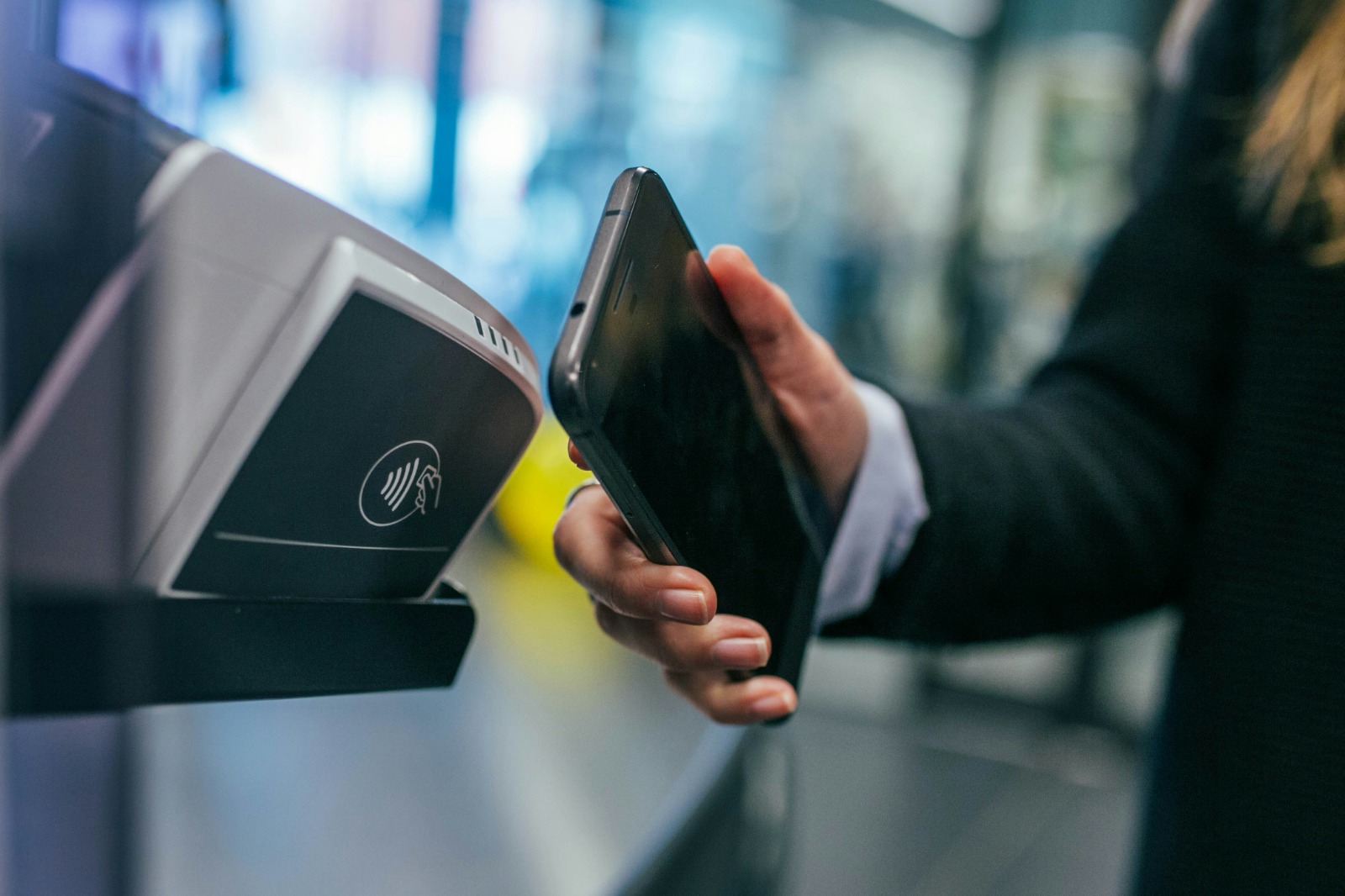
-
April 15, 2024
The Future of FinTech: A Glimpse Into 2024’s Innovative Landscape
Navigating the Digital Horizon

Fatima Alvi
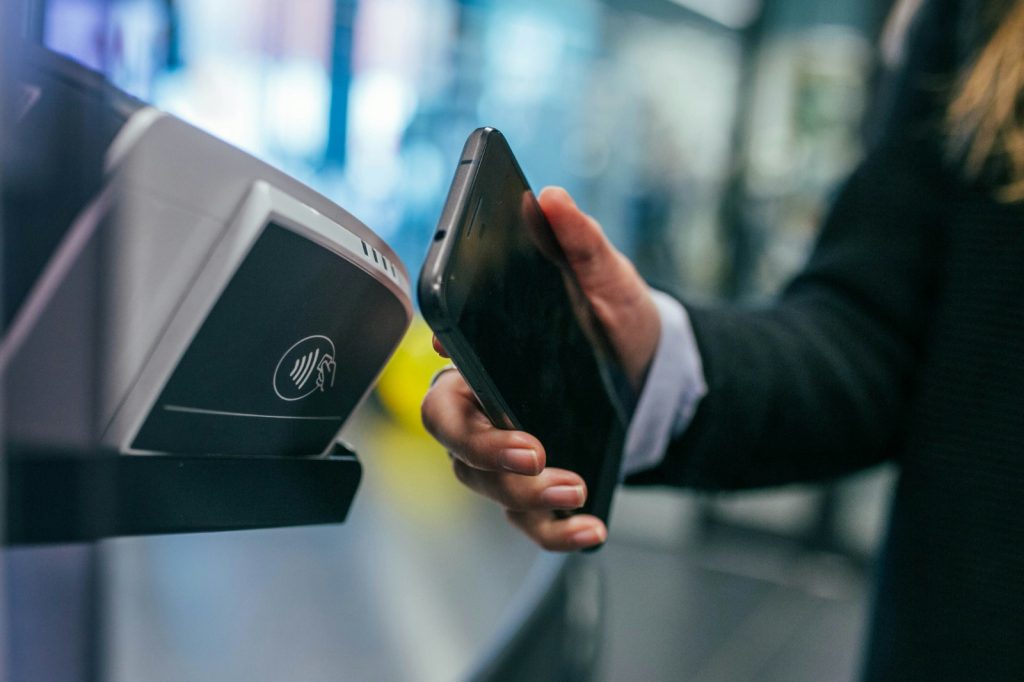
The Future of FinTech: A Glimpse Into 2024’s Innovative Landscape
Navigating the Digital Horizon
Date: 15/04/2024
The financial realm is in the midst of a radical evolution, with technology as its catalyst. As we look to 2024, it’s evident that this wave of transformation shows no sign of slowing down. Here’s a comprehensive look at what the future holds for the FinTech world.
Blockchain’s Expanding Horizons
Blockchain and cryptocurrencies like Bitcoin and Ethereum have revolutionized the way we view money and transactions. As we move into 2024, expect these digital currencies to become an even more integral part of daily transactions, bridging the divide between digital and traditional currency realms.The AI Revolution in Finance
Artificial intelligence (AI) is not just a fixture in sci-fi anymore; it’s becoming the bedrock of the financial industry. By end of 2024, AI will likely be powering everything from fraud detection systems to personalized investment platforms, offering advice tailored to individual financial trajectories.The Open Banking Frontier
Imagine a world where you have complete control over your financial data, coupled with the freedom to share it securely. That’s the promise of open banking. This approach, emphasizing transparency and user control, is set to redefine the relationship between consumers and financial institutions.Mobile Payments: A New Normal
The convenience of tapping your phone to make a purchase is becoming second nature. As tech continues to streamline our daily routines, anticipate mobile payments becoming as commonplace as cash and cards.Prioritizing Cybersecurity
With great digital power comes great responsibility. As the financial sector leans more heavily on tech, cybersecurity will be paramount. The industry will be on its toes, ensuring that transactions remain both smooth and secure.Wellness Meets Finance: The Rise of Welltech
The tapestry of FinTech in 2024 will be a vibrant blend of innovative tech, user-centric services, and a steadfast focus on security. As we stand on the cusp of these transformations, one thing is clear: the world of finance is not just adapting to the future; it’s actively shaping it.
In Conclusion
The fusion of financial health with overall well-being is giving rise to “Welltech”. This emerging niche in the FinTech landscape focuses on aligning financial strategies with holistic wellness goals, ensuring that your finances are as healthy as you are.Stay tuned and keep an eye on this space. The journey of FinTech promises to be a thrilling one, replete with innovations that will redefine our financial interactions.
Blockchain – Digital Trends – Open Banking – Cybersecurity – Artificial intelligence
-
- Open Banking Trends 2024

-
March 03, 2024
Open Banking Trends 2024
Shaping the Future of Financial Services

Fatima Alvi

Open Banking Trends 2024
Shaping the Future of Financial Services
Date: 07/03/2024
The world of banking has long been defined by its brick-and-mortar establishments, paper-led processes, and traditional business models. However, as we step into 2024, the winds of change are sweeping the sector. Open banking is at the forefront, not just as a tech buzzword, but as a tangible force reshaping how consumers and businesses interact with financial services. Here’s a glimpse of the top open banking trends that are defining this transformative moment in the financial realm:
1. Embracing API-First Architectures:
APIs (Application Programming Interfaces) have become the backbone of open banking. Financial institutions are increasingly adopting API-first strategies, allowing third-party developers to create applications and services around the financial institution. This paves the way for enhanced customer experiences and a wider range of services.
2. Rise of Personalized Banking Experiences:
With the data-sharing capabilities of open banking, there’s a surge in hyper-personalized financial products and services. Whether it’s tailored loan offers, custom savings plans, or individualized investment advice, open banking is enabling a world where banking feels deeply personal.
3. Enhanced Financial Wellness Tools:
Open banking is propelling the development of sophisticated financial wellness tools. These platforms, harnessing data from various sources, empower users with insights on spending habits, saving opportunities, and more, guiding them towards smarter financial decisions.
4. Strengthening Security Protocols:
As open banking broadens the financial ecosystem, security remains paramount. Expect to see advanced authentication methods, including multi-factor authentication, biometric verifications, and blockchain-based solutions, ensuring user data remains impervious to breaches.
5. Collaboration over Competition:
Rather than viewing fintechs and third-party providers as threats, traditional banks are forming symbiotic partnerships. This collaborative ethos not only enriches the offerings but also accelerates innovation within the financial space.
6. Expanding Global Reach:
With open banking regulations becoming more commonplace across the globe, financial institutions are scaling their services across borders. This is heralding an era of international banking services tailored to local needs.
7. Evolving Regulatory Landscape:
Regulation remains a key driver for open banking. In 2023, we anticipate more countries will introduce or refine their open banking regulations, ensuring a safer and more standardized environment for both consumers and providers.
8. Greater Financial Inclusion:
One of the most impactful facets of open banking is its potential to bridge the financial inclusivity gap. By lowering barriers to entry and offering a diverse range of financial products, open banking can extend financial services to previously underserved or unbanked populations.
9. Sustainable Finance Initiatives:
With the growing emphasis on sustainability, open banking platforms are integrating features that allow consumers to invest in green initiatives, track their carbon footprint, or get rewards for sustainable choices.
10. AI and Machine Learning Take Center Stage:
Artificial intelligence and machine learning are playing pivotal roles in harnessing the vast amounts of data within open banking ecosystems. From fraud detection to predictive analytics for investment, AI is the silent force powering the open banking revolution.
In conclusion, 2024 has set the stage of a dynamic shift in the way we perceive and interact with banking. Open banking, with its promise of transparency, collaboration, and innovation, is not just changing the financial industry—it’s reimagining it. As consumers, businesses, and institutions collectively embrace these trends, the future of finance looks more inclusive, intuitive, and interconnected than ever before.
Banking – Financial Inclusion – Machine Learning – Artificial intelligence – Sustainability -
- Smartphone Financing:

-
February 24, 2024
Smartphone Financing:
Accelerating Digital Adoption and Boosting Financial Inclusion

Fatima Alvi

Smartphone Financing:
Accelerating Digital Adoption and Boosting Financial Inclusion
Date: 24/02/2024
In an era defined by digital innovation, access to technology has become synonymous with empowerment and progress. Smartphones, in particular, have transformed from luxury items to essential tools for communication, information access, and economic participation. However, the financial hurdle of acquiring a smartphone often hinders the journey toward digital inclusion. This is where smartphone financing steps in as a game-changer, accelerating digital adoption and ushering in a new era of financial inclusion.
The Digital Divide and the Power of Connectivity
The digital divide, a gap that separates those with access to technology from those without, is a stark reminder of inequality in today’s world. Smartphones, with their capacity to connect individuals to information, education, and markets, have the potential to bridge this divide. Yet, the upfront cost of owning a smartphone remains a significant barrier, especially for individuals in low-income segments.
The Role of Smartphone Financing
Smartphone financing is reshaping the landscape of digital inclusion. This innovative approach enables individuals to own smartphones through affordable installment plans, effectively removing the financial obstacle. By spreading the cost over time, smartphone financing democratizes access to technology, allowing individuals from various income levels to join the digital revolution.
Accelerating Digital Adoption
Smartphone financing accelerates digital adoption by removing the entry barrier. This accessibility extends to a wider demographic, including students, entrepreneurs, and individuals from marginalized communities. With smartphones in their hands, users can access e-learning platforms, digital job markets, and connect with a global network of opportunities.
Fostering Financial Inclusion
Financial inclusion is a fundamental step toward empowering individuals economically. Smartphone financing supports this goal by providing individuals with a means to access digital banking services, manage finances, and engage in online transactions. This empowerment is particularly transformative for individuals who lack access to traditional banking infrastructure.
Empowering Entrepreneurs and Small Businesses
Entrepreneurs and small businesses play a crucial role in economic growth. Smartphone financing empowers these entities by enabling access to digital markets, social media platforms, and communication tools. This accessibility levels the playing field, allowing entrepreneurs to reach a wider audience and tap into the digital economy.
Nurturing a Culture of Innovation
Smartphone financing also nurtures a culture of innovation. As more individuals gain access to technology, the potential for local app development, digital solutions, and creative endeavors increases. This localized innovation can have a significant impact on economic growth and community development.
Choosing a Path of Inclusion
As you contemplate smartphone ownership, consider the broader impact of your choice. By embracing smartphone financing, you’re not just acquiring a device; you’re contributing to a more inclusive, connected, and empowered society. Join the movement toward digital adoption, financial inclusion, and technological progress.
Unleash the Power of Connectivity with Smartphone Financing
Seize the opportunity to become a part of the digital revolution. Choose smartphone financing to accelerate digital adoption, bridge the digital divide, and empower yourself and others to unlock the potential of technology.
Financial Inclusion – Digital Empowerment – Fintech and Innovation – Mobile Technology – Digital Divide -
- Financial Empowerment Through Digital Innovation

-
January 28, 2024
Financial Empowerment Through Digital Innovation
Transforming Lives with Kistpay’s Smartphone Financing

Fatima Alvi

Financial Empowerment Through Digital Innovation
Transforming Lives with Kistpay’s Smartphone Financing
Date: 28/01/2024
In today’s digital age, smartphones have become essential tools for communication, information access, and even financial management. However, for many individuals, the cost of owning a smartphone can be a barrier to entry. Kistpay is revolutionizing this landscape through its innovative smartphone financing solutions, creating pathways for financial empowerment and improved quality of life.
A Pathway to Financial Inclusion
Kistpay’s mission is rooted in accessibility. Our smartphone financing solutions are designed to break down financial barriers and make modern technology available to individuals from various income segments. By offering flexible financing plans, we enable individuals to access smartphones that can serve as powerful tools for personal and financial advancement.
Unlocking Financial Literacy
Owning a smartphone isn’t just about connectivity; it’s about accessing a wealth of information and resources. Kistpay’s financing empowers individuals to explore financial literacy apps and tools that can enhance their understanding of budgeting, savings, and investment. This newfound knowledge can have a direct impact on improving financial management and planning.
Enhancing Career Opportunities
Access to a smartphone can be a game-changer in the job market. Job search apps, networking platforms, and remote work tools are now fundamental to career advancement. Kistpay’s financing options ensure that individuals can acquire smartphones that enable them to stay connected, search for job opportunities, and engage in professional development, ultimately leading to improved career prospects.
Economic Empowerment through Entrepreneurship
For aspiring entrepreneurs, a smartphone can be the key to launching and growing a business. With access to communication apps, e-commerce platforms, and social media, individuals can start businesses, reach customers, and manage operations effectively. Kistpay’s financing solutions provide the means for entrepreneurial dreams to become a reality.
Quality of Life Enhancement
Owning a smartphone can improve overall quality of life. It grants access to telemedicine, educational resources, entertainment, and essential services. Kistpay’s smartphone financing ensures that individuals from all walks of life can experience these benefits, contributing to a more inclusive and connected society.
Choosing Financial Empowerment with Kistpay
Kistpay’s smartphone financing isn’t just about owning a device; it’s about gaining access to a world of opportunities and information. As you embark on your journey toward financial empowerment, remember that a smartphone is more than a communication tool—it’s a gateway to personal growth, professional development, and improved financial well-being.
Unlock Your Potential with Kistpay
Make the choice that aligns with your goals and aspirations. Choose Kistpay’s smartphone financing to take a step toward financial empowerment, technological inclusion, and a brighter future.
Financial Inclusion – Digital Transformation – Smartphone Ownership – Fintech Innovations – Economic Empowerment -
- Optimal Device Financing Risk Management Platform

-
January 06, 2024
Optimal Device Financing Risk Management Platform
Navigating the Complex Landscape of Device Financing Solutions to Mitigate Risks and Maximize Returns

Fatima Alvi

Optimal Device Financing Risk Management Platform
Navigating the Complex Landscape of Device Financing Solutions to Mitigate Risks and Maximize Returns
Date: 06/01/2024
In a world driven by technological advancements and evolving consumer preferences, device financing has emerged as a powerful strategy for businesses to boost sales and enhance customer loyalty. However, as the demand for financing options rises, so does the need for effective risk management. Selecting the right device financing risk management platform is crucial to ensuring a secure and successful financing program. Here’s a comprehensive guide to help you navigate this critical decision.
Understanding the Role of Risk Management
Risk management in device financing involves identifying, assessing, and mitigating potential risks that could impact the financial health of your business. These risks can range from credit default to fraud and can significantly affect profitability and customer relationships. A robust risk management platform acts as a safeguard, ensuring that your financing program remains sustainable and profitable.
Key Considerations When Choosing a Risk Management Platform- Data Analysis and Predictive Modeling: A strong risk management platform leverages data analytics and predictive modeling to assess the creditworthiness of customers. Look for a platform that can analyze customer data, payment history, and other relevant factors to predict default probabilities accurately.
- Fraud Detection and Prevention: Fraudulent activities can cripple your financing program. Opt for a platform that employs advanced fraud detection algorithms to identify suspicious patterns and transactions, protecting both your business and customers.
- Scalability and Customization: As your business grows, your risk management needs will evolve. Choose a platform that is scalable and can be customized to adapt to changing risk profiles, customer segments, and regulatory requirements.
- Automation and Efficiency: Efficiency is key in risk management. A platform that offers automated processes, real-time risk assessment, and streamlined workflows can significantly enhance the effectiveness of your risk mitigation strategies.
- Regulatory Compliance: Compliance with industry regulations is non-negotiable. Ensure that the risk management platform you choose aligns with relevant legal and regulatory frameworks, safeguarding your business from potential legal challenges.
- Customer Experience: A seamless customer experience is essential for building trust and loyalty. Look for a platform that balances risk management with a frictionless customer journey, allowing for quick approvals and a user-friendly application process.
- Reporting and Analytics: Comprehensive reporting and analytics are essential for evaluating the performance of your financing program and identifying areas for improvement. A robust platform should provide real-time insights and customizable reports.
Aligning with Your Business Goals
When evaluating risk management platforms, consider how well each option aligns with your business goals. A successful device financing program not only minimizes risks but also contributes to customer satisfaction and revenue growth. Choose a platform that enhances both your risk management capabilities and your overall business strategy.
Unlocking Success with the Right Platform
In the dynamic landscape of device financing, risk management is a crucial component for sustainable growth. By choosing the right risk management platform, you’re not just mitigating potential threats; you’re positioning your business for success in an increasingly competitive market.
Choose Wisely: Invest in Your Business’s Future
Make a well-informed decision that aligns with your risk management needs and long-term business objectives. Empower your device financing program with a robust risk management platform that safeguards your business while fostering customer loyalty.
Risk Management – Financial Technology – Enterprise Solutions – Technology Integration – Industry Insights -
- Empowering Digital Inclusion

-
December 24, 2023
Empowering Digital Inclusion
How Kistpay is Bridging the Digital Divide

Fatima Alvi

Empowering Digital Inclusion
How Kistpay is Bridging the Digital Divide
Date: 24/12/2023
In an increasingly interconnected world, access to technology is no longer a luxury but a fundamental necessity. However, the digital divide, which separates those with access to technology from those without, continues to persist. At Kistpay, we’re on a mission to bridge this divide and empower individuals from all income segments to be part of the digital revolution.
The Digital Divide: A Barrier to Inclusion
The digital divide refers to the gap between those who have access to modern technology and the internet and those who don’t. It’s a divide that encompasses not only access to devices but also the knowledge and skills needed to navigate the digital landscape. This divide can exacerbate existing inequalities and limit opportunities for individuals who are unable to connect.
Kistpay’s Vision for Inclusivity
At Kistpay, we firmly believe that technology should be accessible to all, regardless of financial standing. Our vision goes beyond providing smartphones; it’s about empowering individuals to become active participants in the digital age. We recognize that by democratizing access to technology, we can empower people to enhance their lives and open doors to new opportunities.
Smartphone Financing: Bridging the Gap
Kistpay’s smartphone financing solutions play a pivotal role in bridging the digital divide. By offering flexible financing plans, we make high-quality smartphones attainable for individuals across all income segments. Our goal is to eliminate the financial barrier that often prevents individuals from owning a device that can connect them to the world.
Enabling Digital Participation
The impact of our efforts goes beyond simply putting smartphones in the hands of more individuals. We’re enabling digital participation in meaningful ways. With access to a smartphone, individuals can:- Access Educational Resources: Online learning has become essential, especially in recent times. With a smartphone, students from all backgrounds can access educational resources, participate in virtual classes, and continue their learning journey.
- Connect to Opportunities: Many job opportunities and skill development platforms are accessible online. By owning a smartphone, individuals can access job listings, training programs, and connect with potential employers.
- Access Essential Services: From healthcare information to government services, a smartphone can serve as a portal to essential resources that can improve quality of life.
Empowering Lives, Connecting Dreams
Our commitment to digital inclusion isn’t just about technology; it’s about transforming lives. By making smartphones accessible to individuals who were previously marginalized by the digital divide, we’re creating a more equitable society where everyone has the chance to thrive.
Join the Movement: Embrace Digital InclusionEmbracing digital inclusion requires collective effort. Whether you’re an individual looking for affordable smartphone financing or an advocate for inclusivity, your involvement matters. With Kistpay, you’re not just getting a smartphone; you’re becoming part of a movement that’s changing lives and bridging the digital divide.
Unlock Possibilities: Choose Kistpay
Every smartphone financed through Kistpay isn’t just a device – it’s a tool that unlocks possibilities, breaks down barriers, and paves the way for a more inclusive and connected future. Join us in our journey to empower individuals, bridge the digital divide, and shape a world where technology knows no bounds.
Digital Inclusion – Financial Services – Community Engagement – Tech and Innovation – Empowering Communities -
- The Impact of Mobile Money Platforms
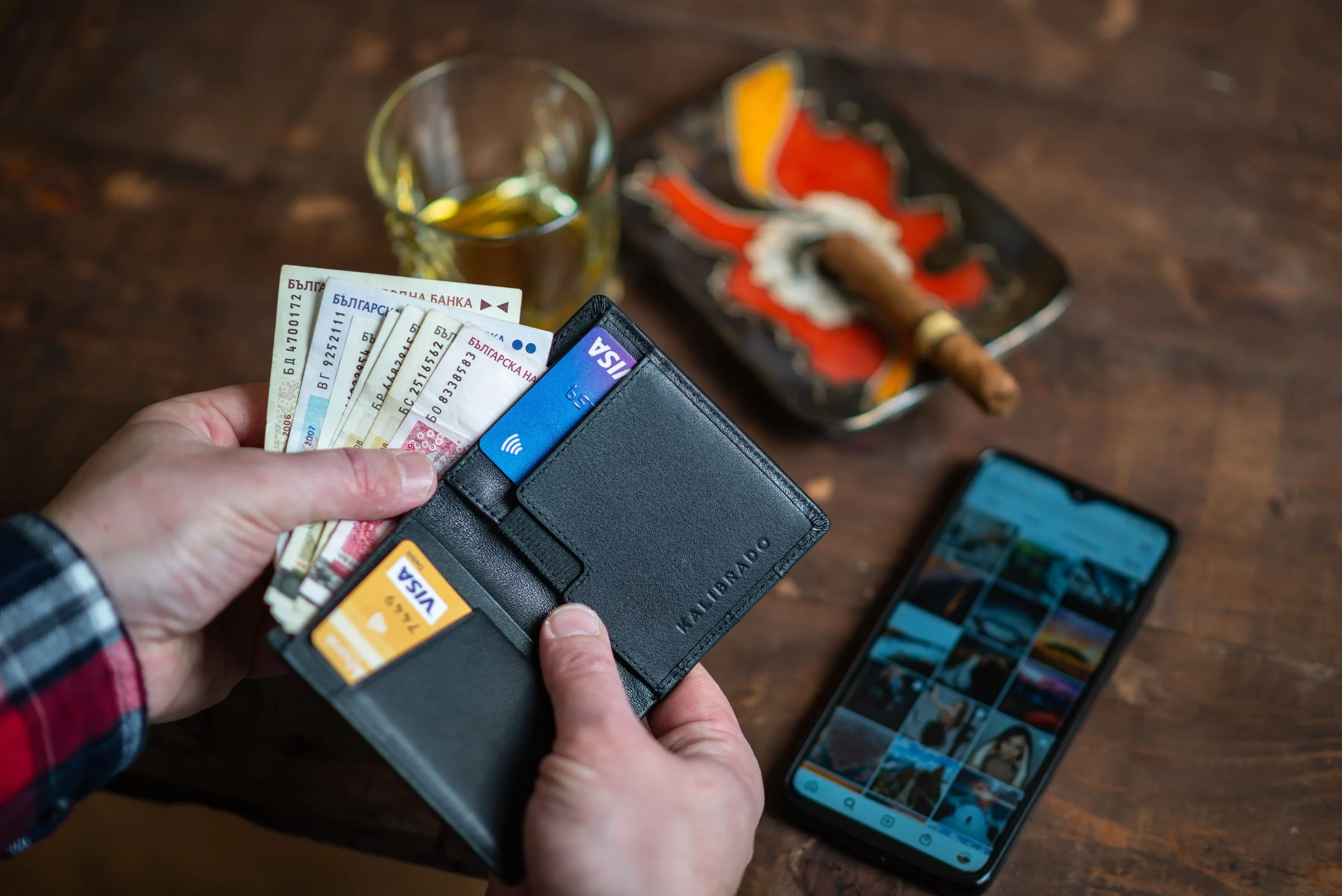
-
December 10, 2023
The Impact of Mobile Money Platforms
Revolutionizing Mobile Device Financing

Fatima Alvi
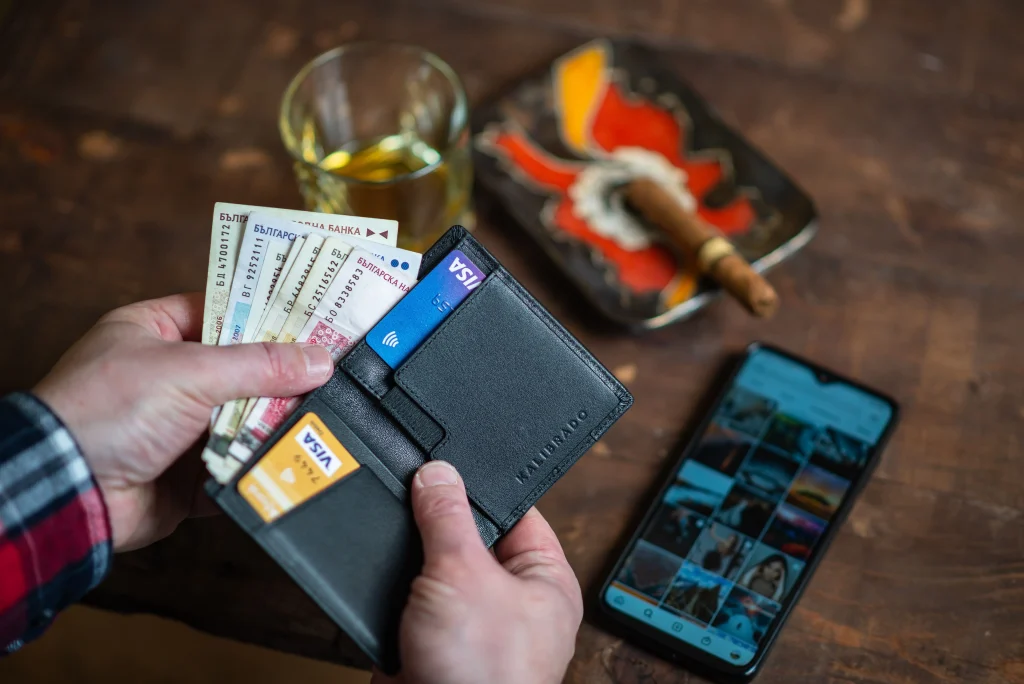
The Impact of Mobile Money Platforms
Revolutionizing Mobile Device Financing
Date: 10/12/2023
In the modern digital age, the power of connectivity is held within the palm of our hands. Smartphones have become more than just devices; they are gateways to a world of information, communication, and opportunities. However, the financial barrier to owning these devices has hindered accessibility for many. This is where mobile money platforms are stepping in, transforming the landscape of mobile device financing and making connectivity accessible to all.
The Traditional Hurdles of Mobile Device Ownership
Owning a smartphone has become synonymous with being part of the digital revolution. Yet, the upfront cost often proves to be a significant obstacle for individuals across various income segments. Traditional financing options often involve complex processes, credit checks, and interest rates that further limit accessibility. This digital divide prevents individuals from harnessing the full potential of modern technology.
Mobile Money Platforms: A Catalyst for Change
Mobile money platforms are emerging as a game-changer in the world of mobile device financing. These platforms leverage the ubiquity of mobile phones and offer simplified, user-friendly solutions that bridge the affordability gap. Through partnerships with financial institutions, these platforms provide an alternative to traditional financing, making smartphones accessible to a broader spectrum of individuals.
Seamless and Inclusive Financing
What sets mobile money platforms apart is their focus on inclusivity and seamlessness. Users can apply for financing directly through their mobile phones, eliminating the need for complex paperwork. The approval process is often quicker, and credit history is not always a determining factor. This democratization of financing enables students, entrepreneurs, and individuals with limited credit history to access the devices they need.
Empowering the Unbanked and Underbanked
One of the remarkable impacts of mobile money platforms is their ability to reach the unbanked and underbanked populations. These platforms offer a bridge to financial services, allowing individuals without traditional bank accounts to engage in digital transactions and establish a digital footprint. This empowerment extends beyond device ownership, fostering financial inclusion and economic participation.
Financial Literacy and Digital Education
Mobile money platforms are not just about financing; they are about empowerment through education. Many of these platforms offer financial literacy resources, teaching users about responsible borrowing, budgeting, and managing their finances. This educational aspect contributes to users’ financial well-being and equips them with skills that extend beyond mobile device ownership.
The Future of Mobile Device Financing
As mobile money platforms continue to evolve, the future of mobile device financing looks promising. These platforms are not only changing the way individuals access smartphones; they are shaping the narrative of financial inclusion and empowerment. By removing the barriers to connectivity, these platforms are enabling a more connected, informed, and economically empowered society.
Embrace the Mobile Money Revolution
The convergence of technology and finance has unlocked new avenues for accessibility and connectivity. Mobile money platforms are at the forefront of this revolution, transforming the landscape of mobile device financing. As you explore options to own a smartphone, consider the transformative potential of these platforms in shaping a future where connectivity knows no bounds.
Unlock Connectivity with Mobile Money
Experience the power of connectivity and financial empowerment with mobile money platforms. Step into a world where devices are no longer distant dreams but accessible tools for progress and potential.
Financial Inclusion – Digital Payment – Economic Impact – Tech and Innovation – Mobile Money
-
- Kistpay’s Ethical Approach

-
September 29, 2023
Kistpay’s Ethical Approach
Responsible Financing and Empowering Customers

Fatima Alvi

Kistpay’s Ethical Approach
Responsible Financing and Empowering Customers
Date: 26/11/2023
In a rapidly evolving digital landscape, responsible financing and customer education have become critical components of fostering financial well-being and inclusivity. At Kistpay, we are deeply committed to setting a benchmark for responsible financing practices, ensuring transparency, affordability, and promoting financial literacy among our users. In this blog, we’ll delve into Kistpay’s unwavering dedication to ethical financing and customer empowerment.
The Foundation of Responsible Financing
At the core of Kistpay’s ethos lies the belief that access to technology should never come at the cost of financial strain. Responsible financing is more than just offering payment plans; it’s about enabling individuals to make informed choices that align with their budget and goals. By setting stringent guidelines, we ensure that our financing solutions empower rather than burden our users.
Transparency: A Cornerstone of Trust
In an era of complex financial products, transparency is paramount. Kistpay is dedicated to fostering trust through clear and concise communication. Our users have a complete understanding of the terms, interest rates, and any associated fees before they commit. This transparency empowers users to make decisions that suit their financial circumstances, eliminating surprises down the road.
Affordability that Empowers
Affordability is not just about low monthly payments; it’s about ensuring that our financing plans fit seamlessly into our users’ budgets. Kistpay’s commitment to affordability is reflected in our diverse range of plans, designed to cater to various income levels. By offering flexibility and options, we empower individuals to choose plans that make sense for their financial situation.
Promoting Financial Literacy: A Shared Journey
Education is a powerful tool for financial empowerment. Kistpay goes beyond financing by providing resources that promote financial literacy. Through informative content, we equip users with the knowledge they need to make informed financial decisions. From budgeting tips to understanding interest rates, our educational initiatives are designed to empower users to navigate the financial landscape confidently.
Choose Responsible Kistpay’s Customer-Centric Approach
Financing with Kistpay
In a world driven by digital innovation, responsible financing is an imperative. With Kistpay, you’re not just gaining access to technology; you’re entering a realm where responsible practices, affordability, and customer education are prioritized. Make the choice that aligns with your values and aspirations for financial well-being.
Empower Yourself with Kistpay’s Ethical Approach
As you explore financing options, consider the impact of responsible practices on your financial journey. Choose Kistpay for a partnership that prioritizes transparency, affordability, and your financial literacy. Together, we’re shaping a landscape where technology and responsible financing go hand in hand.
Responsible Financing – Financial Inclusion – Sustainability – Customer Empowerment – Social Responsibility
-
- Kistpay’s Role in Driving Gender Equality

-
September 29, 2023
Kistpay’s Role in Driving Gender Equality
Empowering Women Through Accessible Technology

Fatima Alvi

Kistpay’s Role in Driving Gender Equality
Empowering Women Through Accessible Technology
Date: 13/11/2023
In the pursuit of progress and gender equality, technology has emerged as a potent tool for empowerment. At Kistpay, we recognize the transformative impact that smartphones can have, especially for women. Our commitment to providing accessible technology aligns with the broader goal of women’s empowerment, bridging gender gaps and fostering inclusivity. Let’s explore how Kistpay’s solution is driving women’s empowerment and contributing to a more equitable world.
Unlocking Opportunities for Women
In many parts of the world, women face unique challenges in accessing education, information, and economic opportunities. Kistpay’s smartphone financing solution directly addresses these challenges by making technology affordable and accessible. Through smartphone ownership, women can tap into online education platforms, access job listings, and engage in entrepreneurial ventures from the comfort of their homes.
Promoting Digital Literacy and Skills Development
Empowerment goes beyond mere access; it’s about equipping women with the skills and knowledge they need to thrive. Kistpay’s smartphone financing solution promotes digital literacy through educational resources and apps. Women can learn new skills, engage in online training, and gain the confidence to navigate the digital landscape with ease.
Bridging the Gender Digital Divide
The gender digital divide is a stark reality, with women often lagging behind in technology access and usage. Kistpay’s solution is a step toward bridging this gap. By providing affordable smartphones, we enable women to engage with technology on their terms, breaking down barriers and fostering a sense of inclusion in the digital world.
Enabling Work-Life Balance
For many women, balancing work, family, and personal commitments can be challenging. Smartphones offer a flexible solution that allows women to manage tasks, connect with colleagues, and access resources without being tied to a specific location. This empowerment leads to greater work-life balance and improved overall well-being.
Elevating Voices and Participation
Empowering women means amplifying their voices and participation. Kistpay’s solution enables women to engage in online forums, social media, and digital platforms, providing a space to share ideas, network, and contribute to discussions that matter.
A Catalyst for Financial Independence
Owning a smartphone can catalyze financial independence for women. Through Kistpay’s solution, women can explore online job opportunities, start businesses, and access financial literacy resources. This financial empowerment is a stepping stone toward greater autonomy and control over their lives.
Choosing Empowerment with Kistpay
As you consider smartphone ownership, recognize its potential to empower women and drive gender equality. By choosing Kistpay, you’re not just gaining access to a device; you’re contributing to a movement that supports women’s empowerment, amplifying their voices, and providing pathways to economic and social progress.
Empower Women: Choose Kistpay for Equality and Access
Embrace the power of accessible technology and gender equality. Join us in shaping a world where every woman has the tools to thrive, connect, and contribute.
Technology Innovation – Financial Inclusion – Digital Divide – Women Empowerment – Gender Equality
-
- Future of Smartphone Financing

-
October 29, 2023
Future of Smartphone Financing
Navigating the Smartphone Financing Process with Kistpay

Fatima Alvi

Future of Smartphone Financing
Navigating the Smartphone Financing Process with Kistpay
Date: 29/10/2023
One of the most compelling advantages of smartphone financing is its ability to make premium devices affordable. Rather than facing the burden of a lump-sum payment, Kistpay’s financing model enables users to spread the cost across convenient monthly installments. This democratization of affordability ensures that even individuals with limited budgets can access the benefits of modern technology.
Staying Current in a Fast-Paced Digital Era: Smartphone Financing Advantage
Technology evolves rapidly, and staying up-to-date is pivotal. Smartphone financing through Kistpay empowers users to embrace the latest models and features without the constraints of prolonged ownership. With the flexibility to upgrade devices more frequently, users can keep pace with evolving technology, ensuring uninterrupted access to cutting-edge innovations.
Tailored Flexibility: Kistpay’s Customizable Financing Plans
Understanding that each individual’s financial situation is unique, Kistpay offers personalized financing plans that cater to diverse needs. Whether seeking short-term solutions or extended payment options, our goal is to enable smartphone ownership for all. Our commitment to inclusivity ensures that regardless of financial circumstances, everyone can partake in the digital revolution.
Navigating the Smartphone Financing Process with Kistpay
Curious about how Kistpay’s smartphone financing works? It’s a streamlined process. Start by selecting a smartphone that aligns with your preferences from our comprehensive range of options. Then, opt for a financing plan that matches your budgetary considerations. Upon approval, you can immediately begin using your new device, sidestepping the need for a full upfront payment.
Informed Decision-Making: Your Guide to Smart Financing Choices
When engaging in smartphone financing, making informed choices is paramount. Evaluate your budget and comprehend your monthly financial commitments. Familiarize yourself with the intricacies of the financing plan, including interest rates and any applicable fees. By grasping these details, you’re better equipped to make a decision that aligns with your financial objectives.
Join the Digital Transformation with Kistpay: Enabling Connectivity and Inclusion
Kistpay isn’t solely a financing platform – it’s a catalyst for digital inclusion. Our mission centers on empowering individuals to thrive in the digital economy. Through accessible and affordable smartphone financing, we’re shattering barriers and crafting a more interconnected and inclusive future.
Seize the potential of connectivity and embark on a realm of limitless possibilities. With Kistpay, owning a smartphone is attainable, irrespective of financial circumstances. Come join us in shaping a future where technology is within reach for all, transcending financial barriers.
-
- Kistpay Empowering Lives
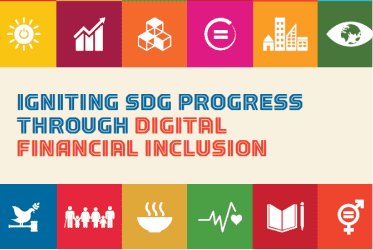
-
October 16, 2023
Kistpay Empowering Lives
Aligning with UN Sustainable Development Goals

Fatima Alvi

Kistpay Empowering Lives
Aligning with UN Sustainable Development Goals
Date: 16/10/2023
In a world striving for progress and equality, the Sustainable Development Goals (SDGs) have emerged as a guiding light. These global goals address critical challenges and set the course for a more inclusive, sustainable future. At Kistpay, our commitment goes beyond providing smartphone financing; it aligns with several of these SDGs, driving meaningful change and transforming lives. Let’s delve into how our solution resonates with the selected SDGs and contributes to achieving their targets.
SDG 1: No Poverty
Kistpay’s smartphone financing solution addresses SDG 1 by making technology accessible to all income segments. Through affordable financing plans, we break the cycle of financial exclusion, enabling individuals to own smartphones and access opportunities that were previously out of reach.
SDG 2: Zero Hunger
While not directly related to hunger, Kistpay indirectly contributes to SDG 2 by enhancing economic opportunities. Access to smartphones facilitates access to information, markets, and networking platforms, empowering individuals to explore entrepreneurial ventures and potentially improve their livelihoods.
SDG 3: Good Health and Well-Being
Kistpay supports SDG 3 by enabling access to healthcare information and telemedicine services through smartphones. This connectivity empowers individuals to make informed health decisions, access medical resources, and stay informed about well-being practices.
SDG 4: Quality Education
Our solution directly aligns with SDG 4 by enabling access to educational resources. Students can use smartphones to access online learning platforms, educational apps, and digital libraries, promoting continuous learning and skill development.
SDG 5: Gender Equality
Kistpay’s impact resonates with SDG 5 by offering equal access to technology for individuals of all genders. This inclusivity fosters empowerment and participation in the digital economy, bridging gender disparities and promoting equal opportunities.
SDG 8: Decent Work and Economic Growth
Through smartphone ownership, individuals can engage in digital work, online businesses, and remote opportunities, aligning with SDG 8’s goal of promoting inclusive economic growth and decent work for all.
SDG 9: Industry, Innovation, and Infrastructure
Kistpay’s innovative approach is aligned with SDG 9, which emphasizes building resilient infrastructure and fostering innovation. Our solution leverages mobile money platforms to create accessible financing options, bridging the digital divide and driving technological progress.
SDG 10: Reduced Inequality
By making smartphones accessible through financing, Kistpay contributes to SDG 10. Our solution works towards reducing inequalities by ensuring that individuals from various income segments can harness the benefits of technology.
SDG 12: Responsible Consumption and Production
Kistpay supports SDG 12 by promoting responsible consumption. Rather than discarding outdated devices, our financing model encourages individuals to use their devices more efficiently and for longer, aligning with sustainable consumption practices.
SDG 17: Partnerships for the Goals
Our commitment to the SDGs extends to partnerships. Through collaborations with mobile money platforms, financial institutions, and educational organizations, we drive collective action and partnerships that amplify our impact and contribute to the achievement of all SDGs.
Choosing Progress with Kistpay
As you explore smartphone financing options, consider the broader impact of your choice. By choosing Kistpay, you’re not only gaining access to technology but also aligning with the Sustainable Development Goals and participating in a movement that’s driving positive change.
Align with Progress: Choose Kistpay for a Better Future
Experience the power of connectivity while contributing to a more sustainable, equitable world. Align your smartphone ownership with the SDGs and join us in shaping a brighter future for all.
-
